

Stage III unresectable NSCLC that has not progressed post platinum-based CRT



Stage III unresectable NSCLC that has not progressed post platinum-based CRT
*5-YEAR POST-HOC ANALYSIS (34.2 months median follow-up): of patients progression-free with IMFINZI (vs 19% placebo, HR 0.55 95% CI 0.45-0.68); P=not reported 1
43%
33% of patients alive with IMFINZI (vs 33% placebo, HR 0.72 95% CI 0.59-0.89); P=not reported 1
Q4W
IMFINZI Q4W flat dose halves infusion and treatment visits (13 vs 26 infusions over 12 months, Q4W vs Q2W dosing)
LEARN MORE

PBS Information: Authority required (STREAMLINED) for NSCLC. Refer to PBS Schedule for full authority information.
BEFORE PRESCRIBING, PLEASE REVIEW FULL PRODUCT INFORMATION AVAILABLE ON REQUEST FROM ASTRAZENECA ON 1800 805 342 OR www.astrazeneca.com.au/PI
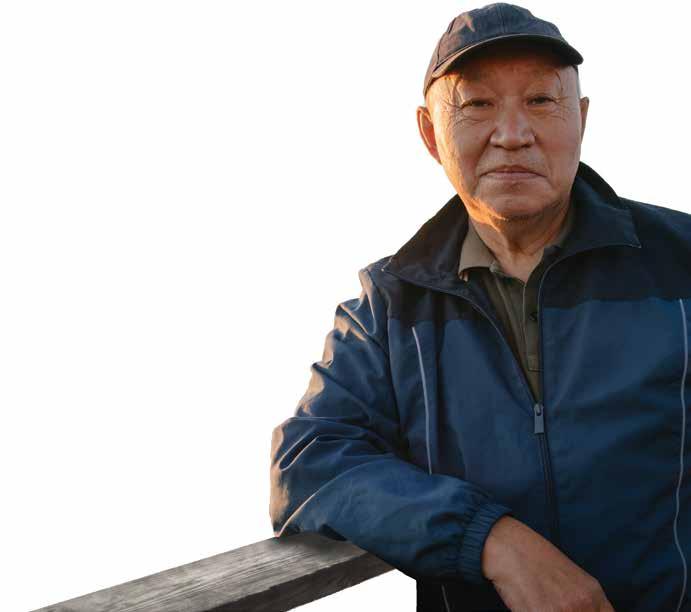
This medicinal product is subject to additional monitoring in Australia. This will allow quick identification of new safety information. Healthcare professionals are asked to report any suspected adverse events at www.tga.gov.au/reporting-problems.
IMFINZI® (durvalumab) Minimum Product Information. 120mg/2.4mL or 500mg/10mL, Concentrated Solution for Infusion in a Single-Dose Vial. INDICATION: For the treatment of patients with locally advanced, unresectable non-small cell lung cancer (NSCLC) whose disease has not progressed following platinum-based chemoradiation therapy. DOSAGE AND ADMINISTRATION: 10 mg/kg every 2 weeks or 1500mg every 4 weeks administered as an IV infusion over 60 minutes, for one year or until disease progression or unacceptable toxicity Patients with a body weight of 30kg or less must receive weight-based dosing, equivalent to IMFINZI 10 mg/kg every 2 weeks as monotherapy until weight increases to greater than 30kg. Administer IMFINZI prior to chemotherapy when given on the same day. IMFINZI should be diluted prior to infusion, see full PI for compatible diluents. No dose reduction or escalation for IMFINZI is recommended. In general, withhold IMFINZI for severe (Grade 3) immune-mediated adverse reactions. Permanently discontinue IMFINZI for life-threatening (Grade 4) immune-mediated adverse reactions, recurrent severe (Grade 3) immune-mediated reactions that require systemic immunosuppressive treatment, or an inability to reduce corticosteroid dose to 10 mg or less of prednisone or equivalent per day within 12 weeks of initiating corticosteroids. See full PI for recommended treatment modifications and specific management for immune-mediated adverse reactions. IMFINZI has not been studied in patients with severe renal impairment. CONTRAINDICATIONS: Hypersensitivity to the active substance or to any of the excipients. SPECIAL WARNINGS AND PRECAUTIONS FOR USE: Immune-mediated adverse reactions (imARs): Immune checkpoint inhibitors, including durvalumab, can cause severe and fatal imARs, which may involve any organ system. Patients should be monitored for signs and symptoms associated with imARs including: immunemediated pneumonitis/interstitial lung disease, *radiation pneumonitis, hepatitis, colitis, immune-mediated endocrinopathies including hypothyroidism/hyperthyroidism/thyroiditis, adrenal insufficiency, type 1 diabetes mellitus, hypophysitis/hypopituitarism, nephritis, dermatological adverse reactions, and other immune-mediated adverse reactions *(including pancreatitis, encephalitis). See full PI for further information on monitoring and management recommendations for imARs. Infusion-related reactions: Monitor patients for signs and symptoms, severe reactions have been reported. Efficacy in patients with PD-L1 expression <1%: efficacy may be different, see full PI. Paediatric use: safety and efficacy not established in patients less than 18 years. Use in pregnancy: Category D. Durvalumab has the potential to impact maintenance of pregnancy and may cause foetal harm. Not recommended during pregnancy; women of childbearing potential should use effective contraception during treatment and for at least 3 months after the last dose. Use in lactation: lactating women should be advised not to breastfeed during treatment and for at least 3 months after the last dose. ADVERSE REACTIONS: IMFINZI monotherapy pooled data: Very common (≥10%, any grade): cough/productive cough, diarrhoea, rash, pyrexia, upper respiratory tract infections, abdominal pain, pruritus, hypothyroidism. Common (≥1% and <10%, any grade): Pneumonia, oral candidiasis, dental and oral soft tissue infections, influenza, hyperthyroidism, pneumonitis, dysphonia, aspartate aminotransferase or alanine aminotransferase increased, night sweats, myalgia, blood creatinine increased, dysuria, peripheral oedema, infusion related reaction. See full PI for other listed adverse reactions including immune-mediated adverse reactions. Date of first approval: 2 October 2018. December 2022.

*Note changes in Product Information.
CI: confidence interval; CRT: chemoradiation therapy; HR: hazard ratio; NSCLC: non-small cell lung cancer; Q2W: every 2 weeks; Q4W: every 4 weeks. References: 1. Spigel DR, et al. J Clin Oncol 2022;40:1301-1311. 2. Antonia SJ, et al. N Engl J Med 2018;379:2342-2350. 3. Antonia SJ, et al. N Engl J Med 2017;377:1919-1929. 4. IMFINZI Approved Product Information. IMFINZI ® is a registered trademark of the AstraZeneca group of companies. Registered user AstraZeneca Pty. Ltd. ABN 54 009 682 311. 66 Talavera Road, Macquarie Park, NSW 2113. www.astrazeneca.com.au. For Medical Information enquiries or to report an adverse event or product quality complaint: Telephone 1800 805 342 or via https://contactazmedical.astrazeneca.com or email Medical Information enquiries to medinfo.australia@astrazeneca.com. AU-16245. ASTR0875/EMBC Date of preparation: April 2023
RANZCR acknowledges the Traditional Owners of Country throughout Australia. We recognise the continuing connection of Aboriginal and Torres Strait Islander people to the sky, lands, waters and culture and we pay our respect to their Elders past and present and emerging. RANZCR acknowledges Mäori as tangata whenua and Treaty of Waitangi partners in Aotearoa New Zealand.


Have you moved recently?
Log into the MyRANZCR portal and ensure your contact details are up to date at www.myranzcr.com
All rights reserved. No part of this publication may be reproduced or copied in any form or by any means without the written permission of the publisher. Publication of advertisements and articles submitted by external parties does not constitute any endorsement by The Royal Australian and New Zealand College of Radiologists of the products or views expressed. Inside News © 2022 The Royal Australian and New Zealand College of Radiologists® (RANZCR®)


The issues associated with artificial intelligence (AI) have been a topic for debate in the medical profession for many years now and the field of radiology has attracted more than its fair share of attention. The discussion was originally framed as an exotic sci-fi scenario but soon, like a runaway robot in a B-grade movie, it became a worrying potential threat to our livelihoods. Then it was discussed as an opportunity we should seize, and finally as an inevitability we had to adjust to. In a sense, it’s all of these at once and, in addition, a reminder of how hard it is to predict and plan for the future.
RANZCR entered the AI debate substantively in early 2018 when our previous President outlined his wish to dismiss the hype and take steps for ‘all stakeholders to actively work together’ to ‘lay the ground rules’ for how AI should be applied.1 This was followed in 2019 with the RANZCR’s release of a set of ethical principles to guide the development of standards related to AI and machine learning, which emphasised vital principles such as patient safety and privacy, as well as the need to delineate responsibility for AI-assisted decision making and to preserve the doctorpatient relationship. 2 Then in 2020 we established an advisory committee to advise our faculty councils on the implication of AI tools for clinical radiology and radiation oncology. Finally, in 2022, the College promulgated a position statement on the regulation
of AI in medicine. This argued that current regulatory mechanisms were no longer fit for purpose in a world in which AI technology would be widely employed to assist medical practitioners. The document highlighted a range of potential misuses and the need to address system failures in the technology. 3 AI has also been a recurring topic at our recent annual scientific meetings—for example, its use to improve the sensitivity and accuracy of mammograms in detecting breast cancer. 4
ChatGPT and a slew of competitors and variants based on so-called large language models. These chatbots are known for their ability to realistically imitate human speech and writing. Unsurprisingly, misuses of the technology are already appearing in local medical settings. Only weeks ago, the CEO of a major teaching hospital in WA felt compelled to ban staff from using ChatGPT and similar tools to write medical notes on patients prior to upload into hospital record systems. The CEO argued correctly that ‘there is no assurance of patient confidentiality’ in using such technology and that we do not ‘fully understand the security risks’ in doing so. 5
Our efforts to date are all good spadework, but the AI world is moving rapidly and it is hard for any one organisation to stay ahead of the approaching avalanche. This has been especially true since the recent and unprecedented publicity given to the generative AI chatbot known as

The AI world is moving rapidly, and it is hard for any one organisation to stay ahead of the approaching avalanche.
continued over...
Hundreds of AI applications have now gained approval from the US FDA, and most of them are intended for use in radiology.6 Many are being implemented in hospitals and practices in the absence of robust validation of their clinical performance. Indeed, a 2021 Dutch study of 100 commercially available AI software products in radiology found that 64 lacked peer-reviewed evidence of their efficacy and only 18 had demonstrated clinical value. 7 Large teaching hospitals and academic centres may have the resources inhouse to assess an AI application prior to its use, but not so for private radiology practices and smaller healthcare services. These organisations are at a high risk of implementing AI tools that do not perform as intended, resulting in workflow inefficiencies and even risks to patient safety.
Uncertainty in AI is endemic at present. In a recent survey of its members on their experiences with AI tools in clinical radiology, the European Society of Radiology found that only 23 per cent had noticed a significant reduction in their workload; 70 per cent found no such effect.8 Our College feels the time is now for helping our members make informed choices in the AI world, not just from the viewpoint of ethical standards, but also on the practical aspects of implementing AI in the workplace. RANZCR spearheaded the effort on a multi-society collaboration to develop a paper on AI implementation guidance. This would comprise a set of guidelines on selection, evaluation, implementation and monitoring of AI tools.
At the European Congress of Radiology (ECR) in Vienna earlier this year, RANZCR was able organise a meeting of the leaders of American College of Radiology (ACR), European Society of Radiology (ESR), Radiological Society of North America (RSNA) and Canadian Society of Radiology (CAR) and made a persuasive case for why we need a multisociety approach. President of ACR Dr Howard Fleishon and President of ESR Dr Adrian Brady were pivotal in getting everyone on board. Our AI Committee Chair (and President-Elect) Professor John Slavotinek’s help in this effort should be acknowledged. As I write this article, a RANZCR – ACR – ESR – RSNA – CAR collaboration on a multi-society paper is being developed for release early next year.
Potentially we are on the cusp of the biggest upheaval in our history due to exponential growth of AI. As worldover politicians and regulators are discovering somewhat belatedly, we need to grab hold of the controls.
1. RANZCR, “New RANZCR President charts a course in AI and advocacy” [media release], 15 January 2018.
2. ———, Ethical Principles for Artificial Intelligence in Medicine, 28 August 2019.
3. ———, Position Statement on the Regulation of Artificial Intelligence in Medicine, 9 June 2022.
4. ———, “Artificial Intelligence (AI) Enhances Breast Cancer Diagnosis” [media release], 16 September 2021.
5. Paul Forden, South Metropolitan Health Service (WA), “Restrictions on the use of ChatGPT” [email to staff], 8 May 2023.
6. The current status and future of FDA-approved artificial intelligence tools in chest radiology in the United States - Clin Radiol. 2023 Feb;78(2):115-122. doi: 10.1016/j.crad.2022.08.135. Epub 2022 Sep 28.
7. Kicky G. van Leeuwen et al., “Artificial intelligence in radiology: 100 commercially available products and their scientific evidence,” European Radiology 31 (2021): 3797–3804.
8. ESR, “Current practical experience with artificial intelligence in clinical radiology: a survey of the European Society of Radiology,” Insights in Imaging 13 (2022): 107–116.
The time is now for helping our members make informed choices in the AI world, not just from the viewpoint of ethical standards, but also on the practical aspects.
The “war for talent” and its impact on RANZCR; and RANZCR’s expanding footprint
COVID certainly has shaken up the employment market around the globe. This has presented challenges and opportunities for RANZCR in its recruitment of high-quality staff members to support the college in achieving our objectives.

The challenges have included losing some staff to salary offers or career opportunities that we just could not match, sometimes for a similar role in another company, but also for promotions to far more senior roles. We are not alone in this. At the AICD Annual Governance Summit in March 2023, the AICD Managing Director apologised to delegates for the impact that persistent staff shortages were having on AICD’s operations. The banking sector, which for decades would only employ people with previous banking experience into most roles, have now embraced the recruitment of people with no financesector experience into these roles to combat their own staff shortages. Every day we hear more stories of businesses unable to find staff.
While this does cause disruptions to the college, it’s also a positive sign that the training and development programs we offer our people do improve their skills; this makes them more effective employees for us while they are here and assists them to achieve their career goals.
It means we have the recruitment and development processes in place to quickly integrate new hires and make them effective employees. It also offers us the opportunity to make structural adjustments in order to better align changes in our ecosystem.
I’ve always been a strong advocate for investing in targeted training and development for our staff and we now set aside money in the RANZCR budget for this to occur. It improves the performance and job satisfaction of our people and positions those who want it, with the skills they need for their next career step in or outside of RANZCR. It also makes internal promotions a realistic option for many of our roles and we have certainly promoted some outstanding candidates in recent times. There’s an old question and response linkage in management circles regarding training:
QUESTION - “What if we train and develop our people and they leave for another job?”
RESPONSE - “What if we don’t train and develop them, and they stay?”
In the business world, long-term (10 year plus) employees are a minority. Workers in the business community have transferable skills and broad employment options and tend to be valued more when they can demonstrate success in multiple companies and situations. Most employees join us for part of their career journey and then move on as their career needs change. We also need to recognise that as the College changes and becomes more complex, some of our staff will recognise that their skills no longer match the needs of RANZCR or their goals and the College goals no longer align, and they will choose to align themselves with another organisation.
Mature businesses understand this and recognise the need to invest in their people while they are with the business, both for the immediate performance returns, but also so that when the staff member does move on, they become an advocate for the company.
This global competition for talent and the way COVID has accelerated the blended working model for many office roles has seen RANZCR change the way it searches for new staff. Remote and blended working has enabled RANZCR to broaden our recruitment search to candidates from across Australia and New Zealand. As a result, we have added to our New Zealand team and we have substantially increased our staff numbers in Melbourne. RANZCR will seek to employ the best people in the market, no matter where they reside. And while we do not and can not offer salary to compete with the top end of the market, we do offer an extensive range of non-financial benefits that we are continuously looking to expand upon.
This has led RANZCR to expand our physical workplace footprint. We’ve now taken back a sub-lease in the Wellington office to provide our New Zealand committees with a suitably sized space to hold their meetings. We have also entered into a trial program with the college of Surgeons to sub-lease some of their office space in Melbourne for our growing Melbourne cohort staff to meet, work and connect.
The story of RANZCR from its inception to this time has been one of continuous, sometimes momentous change. All successful organisations accept and embrace change and RANZCR is no different. We live in the fabled ‘interesting times’ and continued adaption to face the changing environment will see RANZCR well placed for the future.





I’ve always been a strong advocate for investing in targeted training and development for our staff and we now set aside money in the RANZCR budget for this to occur.
“
I like asking questions, particularly clinical and practical questions that will impact daily practice. I was first invited to participate in a large international multicentre drug trial in rectal cancer in 2008. Principal investigator Professor Tim Price wanted to include a radiologist on the trials management committee as it involved a large amount of magnetic resonance imaging (MRI). This provided a golden opportunity to create an MRI audit substudy to capture the current state of MRI magnetic resonance rectal reporting and technique across Australia and New Zealand.
In November 2022, I attended my fourth Australasian Gastro-Intestinal Trials Group (AGITG) Annual Scientific Meeting (ASM). This meeting brings together oncologists, radiation oncologists, surgeons and scientists who present and discuss the latest in Australasian trials, current clinical dilemmas and future directions in gastrointestinal cancer. I first attended this meeting in 2015 and was overawed, humbled and inspired by the more than 400 people gathered, discussing the possible future of improved patient outcomes. However, I reported that only a third of MRI rectal scans in our cohort met image quality standards and included the required data for reporting.1 In addition, while most trials required imaging to stratify patients to test their new treatments, I was the only radiologist in the room.
Through the Abdominal Radiology Group of Australia and New Zealand (ARGANZ) I have engaged with AGITG and radiologists to encourage more collaboration. I finally had another radiologist join me at the 2022 ASM, who was similarly impressed and inspired. We have recently achieved formalisation of a radiologist member of the AGITG upper and lower
gastrointestinal working groups, and I’m working with AGITG leaders to promote the inclusion of radiologists as investigators on trials that involve imaging.
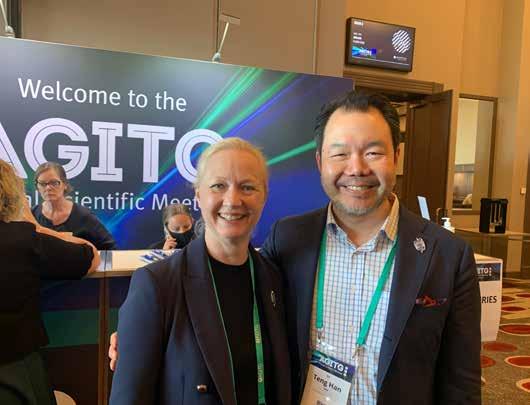
We do, however, need more radiologists to step forward and engage with clinicians in this space. I read with interest, but not surprise, the recent article by Stewart & Sutherland looking
at the rates of radiologist authorship on publications including images. Across four Australian journals only 12% of publications with images included a radiologist author. 2 Australia typically has a greater divide between radiologists and treating clinicians in education and research, but we facilitate this by being absent from multidisciplinary collaborative
You don’t need to be an expert to engage, as that is how you learn what is relevant and how to contribute.
KirstenGormly and Dr Teng Han Tan
conferences. You don’t need to be an expert to engage, as that is how you learn what is relevant and how to contribute.

While RANZCR is increasing the focus on trainee research, it is important we don’t always test imaging questions in a silo. I have been fortunate to be invited to contribute to a variety of clinical trial proposals and grant applications, often finding the imaging sections have been incorrectly worded and lacked the definition required to produce useful results. Having radiologist input during the development phase of a trial can improve the overall trial protocol, allow inclusion of additional imaging biomarkers which are unknown to the non-radiologists, and provide an opportunity for imaging substudies within large patient cohorts.
Being involved brings us to the table with our colleagues and reminds them how questions about imaging should be answered by radiologists. This will be one of our key value add areas in the future of radiology. I think there is great value in research collaboration, but we need to actively pursue opportunities. I encourage radiologists who like asking questions to engage with the clinicians and trials groups in your area of practice, be visible and get the dialogue flowing for the benefit of all.
Dr Kirsten GormlyRadiologist, Adelaide
Being involved brings us to the table with our colleagues, and reminds them how questions about imaging should be answered by radiologists. This will be one of our key value add areas in the future of radiology.
As clinical practice shifts from being disease-centred to patient-centred in its pursuit of personalised medicine, recognition of sex and gender diversity becomes especially important. This should therefore also be reflected in the clinical research being conducted to ensure that medical studies fully represent diverse populations and hence improve clinical healthcare. A special issue of the Journal of Medical Imaging and Radiation Oncology (JMIRO), the official journal of the Royal Australian and New Zealand College of Radiologists (RANZCR), focuses on gender and diversity, and highlights the rationale behind its decision to adopt the Sex and Gender Equity in Research (SAGER) guidelines.
Sex and Gender Equity in Research (SAGER) guidelines were developed in 2016 and are a valuable tool for authors and editors to help them include the variables of sex and gender in their research. The guidelines have been widely endorsed and encourage authors to exercise care in their use of terminology while providing a comprehensive procedure for reporting sex and gender information in their study design, data analyses, results and interpretation of findings.
The SAGER guidelines have now been adopted by the JMIRO and will be included in authors’ instructions and in briefings to reviewers, associate editors and guest editors. RANZCR encourages all members to follow these guidelines: http://ow.ly/MnUZ50MK6pO
The March 2023 issue of JMIRO includes original articles, review pieces and viewpoints on gender and diversity, which cover a wide range of areas, including gender analysis in radiology professions, patients, workplaces and working conditions.
Historically, medical studies have underrepresented female participants and most research data have been collected from males and generalised to other genders. While the needs and concerns of transgender and genderdiverse patients have begun to be addressed, many clinicians continue to be underinformed about the health and wellbeing needs of trans and gender diverse individuals, resulting in problems with service provision. More attention therefore needs to directed to this group in research, policy and practice. A recent study in Academic Radiology outlined how a radiologyoriented transgender curriculum showed success in increasing radiologists’ awareness about transgender patients. The researchers of this study noted ‘By understanding the needs of transgender patients, radiology residents can help promote an equitable and inclusive environment in radiology departments.’
RANZCR member Dr Glen Lo has contributed this editorial to the special issue of JMIRO.
EDITORIAL – BY DR GLEN LO
Medicine has changed a lot since the turn of the most recent century; it’s now been 22 years since the clocks ticked over into the ‘future’ that was the near horizon for the Australian television show, Beyond 2000. I entered medical school in 1997 feeling utterly alone and without representation; I’d come from a single-parent family and attended a public school – only four graduates went to university. I was also mixed race and gay. It was not uncommon in the 1990s to hear of gay men being refused hospital entry to visit a partner because the rules dictated ‘family only’ and did not recognise same-sex relationships. Australia only recognised my marriage certificate in 2017, three years after I got married in Canada. I had not intended to be a doctor. I hated going to the doctor because they made you wait, without apology, and made wrong assumptions. I didn’t trust doctors, and I didn’t like to hear of people like me being excluded from hospitals because of who they loved. With my teenage reasoning, the only solution was to become a doctor myself and re-write hospital rules.
Gender diversity in academic and leadership positions in radiology internationally is equally important. Factors leading to the gender gap include a lack of role models and mentors, unconscious biases, other societal barriers and generational changes. A number of recent studies have quantified the lack of gender diversity in radiology.
“
This special issue of JMIRO is the second in a series that examines diversity, equity and inclusion: in our colleagues, our patients and ourselves. This issue examines gender diversity, specifically representation of women authored by women, acknowledging that there is a void of data regarding the presence, contributions and workplace experiences of gender non-binary and transgender providers. It also offers our readership personal and institutional tactics on how to fully include sexual and gender minorities. Future special issues will address racial and cultural diversity, as well as hearing from Aboriginal and First Nations voices from Australia and New Zealand Aotearoa. Disability inclusions are not yet planned but are also important. Central to these special issues is listening to those with lived experience and taking direction from them. The health inequalities and inequities experienced by our patients and the workplace inequalities experienced by healthcare providers are a by-product of the common culture in which we live. Solutions to both sets of problems are intersectional.1 We all have a role.
Sex and gender are two related but different variables, and, in a scientific journal such as JMIRO, it is critical for all RANZCR fellows to have a working understanding of how to ask research participants questions on gender identity to accurately collect and report data. The Australian Bureau of Statistics sets standards2 for four variables:
examine gender in workforce planning; Hayter and Ayesa report on female representation in subspeciality interest groups; Batumalai et al. report on assumed gender trends in first and senior authors in JMIRO publications; Hesselberg et al. report on gender diversity and leadership in radiation oncology. Georgousakis provides an account on mentoring for women.
Sexual minorities are often lumped together in broadbrush approaches that use increasingly long acronyms that are as much a word salad for readers as the diversity of people that they conglomerate. For example, attempts to include nonheterosexual human
However, RANZCR has now literally joined the march forward with the Board’s endorsement to participate in a combined medical speciality college entry in the Sydney World Pride 2023 Mardi Gras Parade, organised by the bi-national network of specialists and medical students, Pride in Medicine.
3.
To date, RANZCR has only collected fellows’ gender data as a binary categorical variable. This issue’s papers on gender diversity highlight the under-representation of women in radiology. Moriarty et al. report on gender imbalance in interventional radiology; Yap et al. report on radiation oncology gender pay gap; Lim et al.
sexual identities can be made maximally inclusive but unworkably complex by the acronym ‘LGBTQQIP2SAA+’ (Lesbian, Gay, Bisexual, Transgender, Questioning, Queer, Intersex, Pansexual, Two-Spirit, Androgynous, Asexual +). 3 The two articles in this special issue addressing diversity of sexuality have chosen to report on LGBTQIA+ people: Bird et al. offer suggestions for individuals and institutions on workplace inclusivity; Chapman et al. report on a qualitative study on gaps in knowledge for radiologists and radiation oncologists in caring for LGBTQIA+ patients. RACS and RANZCOG are both ahead of RANZCR in policies and actions around diversity, inclusion and equity, and the paucity of invited submissions for a special issue on diversity reflects this.
How is JMIRO changing in the context of these special issues? The Medical Journal of Australia has reported on gender inequity for women in medicine and now recommends that authors of research published in the MJA follow the Sex and Gender Equity in Research (SAGER) guidelines. 5 The American Journal of Radiology has made recommendations for more inclusive language in figure legends and gender descriptors.6 It would seem an easy solution to simply adopt any suggested inclusive language alternative. But, using new blanket terminology without context, consultation or consent, can quickly backfire, especially if people perceive erasure. Women were dehumanised when the Lancet Sep 2021 cover Tweet quoted ‘bodies with vaginas’ without context, and the cover Tweet went viral. My skin crawls when reading research papers about people like me, referred to as ‘CaLD’ (culturally and linguistically diverse, but pronounced ‘cold’) or ‘MSM’ (men who have sex with men, not mainstream media); I didn’t choose these names. In studies including only participants who have had the opportunity to confirm that they identify as women, then female-gendered language terms recognising womanhood are expected. Assumptions on participant gender are, however, exclusionary and result in identity erasure. There is no easy solution or shortcut from asking the right questions at the right time.
It is critical for all RANZCR fellows to have a working understanding of how to ask research participants questions on gender identity to accurately collect and report data.
Attempts at change may get shot down immediately because of imperfection; it’s easy to reject any solution that doesn’t immediately solve all problems. It is also easy to speak over and alienate a group of people, if advocating without their engagement or consent. Whop et al. 7 describe this concept well in ‘The Blackfulla test’ for active representation in Indigenous health research. Every member of RANZCR, our colleagues, and our patients all deserve respect, to be counted, and to have a voice. We need to be precise and correct in our data collection and reporting, as we work towards optimising health outcomes. We earn our patients’ trust by respecting their autonomy and this includes affirming their identity and who will visit them in hospital. The assurance of being able to visit a hospitalised same-sex spouse shouldn’t be limited to those who have attained the privilege and authority of a medical degree. However, those who do possess the privilege and authority inherit the responsibility to identify and dismantle health inequities at the coalface, today. I welcome constructive engagement in crafting durable solutions that will serve us far beyond the near horizon.
Dr Glen Lo1. Anderson CTM. Taking Back our voices — #HumanityIsOurLane. N Engl J Med 2020; 383: 1609– 11.
2. Statistics AB of. Standard for Sex, Gender, Variations of Sex Characteristics and Sexual Orientation Variables [Internet], 2020. [Cited 27 Sep 2022.] Available from URL: https://www.abs.gov.au/statistics/ standards/standard-sex-gender-variations-sexcharacteristics- and-sexual-orientation-variables/ latestrelease
3. Rioux C, Par_e A, London-Nadeau K et al. Sex and gender terminology: a glossary for gender-inclusive epidemiology. J Epidemiology Community Health 2022; 76: 764–8.
4. Dorrigan A, Zuccala E, Talley NJ. Striving for gender equity at the medical journal of Australia. Med J Aust 2022; 217: 138–9.
5. Heidari S, Babor TF, Castro PD, Tort S, Curno M. Sex and gender equity in research: rationale for the SAGER guidelines and recommended use. Res Integr Peer Rev 2016; 1: 2.
6. Doo FX, Zavaletta V, Carroll EF, Ellis KL, Rosenkrantz AB. Turning a page in the yellow journal: figure legends and gender-inclusive patient descriptors. Am J Roentgenol 2022; 219: 1–2.
7. Whop DL, Watego AD, Watego C. The Blackfulla Test: 11 reasons that Indigenous health research grant/ publication should be rejected [Internet]. [Cited 21 Sep. 2022.] Available from URL: https://indigenousx.com.au/ the-blackfulla-test-11-reasons-that-indigenous-healthresearch- grant-publicationshould-be-rejected/

The new RANZCR Associate Affiliation enables individuals who do not qualify for admission to membership of the College, but whose scope of practice aligns with the specialties of clinical radiology and radiation oncology to become a RANZCR Associate .

In May this year, RANZCR President Clin A/Prof Sanjay Jeganathan was pleased to announce that the College has received initial accreditation as a CPD Home and welcome the medical community to join the College via its new RANZCR Associate Affiliation. This was in response to the changes to the standards for Continuing Professional Development (CPD) that the Medical Board of Australia and Medical Council of New Zealand announced in July 2021, including the concept of CPD Homes.
RANZCR has delivered a seamless transition to the new requirements for CPD set by MBA and Medical Council of New Zealand with 2022 as a transition year for our members. RANZCR introduced some of the new CPD requirements and proudly launched the CPD ePortfolio, its online platform for members to record and track their progress. The transition year was well received by members, allowing the opportunity to familiarise themselves with the enhanced CPD program and the new CPD ePortfolio platform.
From January 2024, all doctors who hold medical registration with the Medical Board of Australia (MBA) will be required to nominate a CPD home. RANZCR’s CPD program fully aligns with the requirements detailed in the MBA’s 2023 Continuing Professional Development Registration Standard, enabling all CPD program participants to meet their MBA registration requirements with ease.
A CPD Home is defined as an organisation that is accredited by the Board’s accreditation authority, the Australian Medical Council, to provide a CPD program for medical practitioners. RANZCR received initial accreditation as a CPD Home in November 2022.
With a long standing and proven track record of supporting the CPD programs for the specialties of clinical radiology and radiation oncology, we invite medical specialists and health care professionals who are working in related fields of medical imaging, image guided intervention, and cancer care to nominate RANZCR as their CPD home.
Meanwhile, the College’s current membership model was reviewed to allow new groups in the medical community to join RANZCR, have a relationship and association with the College, and nominate it as their CPD Home. To support the wider medical community to join RANZCR’s CPD home, the College has launched RANZCR’s Associate Affiliation structure.
This is an important and exciting opportunity for the College and its Fellow Members.
Individuals whose scope of practice aligns with the specialties of clinical radiology and radiation oncology can now become a RANZCR Associate*. RANZCR has created three Associate categories:
1. Specialist Associate – doctors who have trained and gained a Fellowship from a recognised Specialist Medical College in Australia or New Zealand or another recognised Specialist Medical Society.
2. Medical Associate – medical students or junior doctors who are interested in a career in clinical radiology/radiation oncology. Nonspecialist doctors who are qualified and recognised by APHRA as a doctor but who have not gained a Fellowship from a recognised Specialist Medical College in Australia or New Zealand or another recognised Specialist Medical Society.
3. Nursing and Allied Health Associate – other healthcare professionals whose scope of practice identifies with clinical radiology or radiation oncology.
Visit the website for full details of these categories, eligibility criteria and to join.
The RANZCR Associate is an opportunity for affiliated medical and health practitioners to join our professional community to build knowledge, skills and relationships within the field of medical and interventional imaging, radiation oncology treatment and cancer care.
• Access Special Interest Groups to further your knowledge and connect with like-minded peers.
• Enhance your skills with courses, workshops and tutorials at Associate rates.
• Take advantage of opportunities to build relationships with peers and mentors.
• Use of the RANZCR Associate logo. Visit the website for the full list of Associate benefits.

Contribute to better quality of patient care by being a part of the College that designs, delivers, and quality assures global best practice training and CPD programs.
Find out more about the RANZCR Associate Affiliation, categories, benefits and fees and apply via the website: www.ranzcr.com/college/membership/ associates
Enquiries, please email associate@ranzcr.edu.au
Associates will receive a range of benefits, including:
• CPD management – make RANZCR your CPD Home: gain access to quality educational and networking opportunities available in conjunction with the RANZCR CPD ePortfolio; create development plans; upload evidence; record hours; view compliance; download certificates with ease.
• Benefit from RANZCR’s work in setting standards and guidelines that support quality, and their advocacy work in the sector.
If your scope of practice aligns with clinical radiology and radiation oncology, you can now make RANZCR your CPD Home. Fellow Members, we invite you to refer aligned medical professionals to use RANZCR as their CPD Home and join our professional community.
*Specific eligibility criteria applies.
For RANZCR Fellow Members, CPD management and support is already included in your RANZCR membership.

If we did not volunteer our time, expertise and knowledge then the future of the profession will be at risk and we alone will be responsible for the consequences.
Has volunteering given you skills and experience you could not otherwise have gained? What achievements are you most satisfied with/proud of as a volunteer?
By volunteering I have certainly had a much wider view of the profession not only in ANZ but globally. It has kept me abreast with the challenges facing the profession nationally and globally.
On a personal note I have made lots of friends across the world by way of representing the College or interacting with them in my subspecialty of Emergency and Trauma Radiology.
You have made a huge contribution by volunteering with the College. What motivates you to volunteer? How does volunteering contribute to patient care, to colleagues, to the professions?
Our college plays an important role in ensuring that the highest level of training is delivered to ensure that we have the best workforce to serve our community and adequate workforce for the present and future. The College outlines the best standards of practice and is the voice of the profession to the regulators and legislative bodies.
I have always maintained and voiced that WE are the College and we are responsible on the future of the profession and future generations of radiologists.
What has the pandemic meant for the volunteer experience? What are the risks of burnout? How are these best managed, in your view? Is burnout in health care being felt more keenly than ever in 2023?
Burnout is a real concern and unfortunately the pandemic has escalated it. However, many steps can be taken by individuals to ensure that there is the right balance between work and lifestyle. I think a lot is within our control to strike the right balance and work with colleagues and professionals to identify it early and address it rather than getting into a spiral.
Do you have any advice on volunteering in general? Are there efficiencies to be gained in sharing the volunteer experience?
I would encourage every member to volunteer in some capacity. It does broaden your views and you learn to understand that most issues faced in anyone’s work environment is not unique to them but also experienced by others. There is more likelihood of findings some solutions collectively on some common issues.
What more can the College do to support volunteers? How can the College best support collaboration and knowledge transfer?
The College staff do a great job and delegating more responsibilities to them, recognising their contributions, attributes and skills does help to lessen the burden on the volunteer members.
What are the perceived barriers to (particularly younger) Fellows taking on College volunteering activities?
Younger members with family commitments and young children most likely present the biggest barriers. Senior members can also play a significant role in mentoring them in that direction. I have certainly done that in my department and we have many of my colleagues volunteering their time for the College in various roles. To me that is very satisfying particularly when they are enthusiastic and keen to devote some time for the College’s activities.
Do you have a question for the next “volunteer in the spotlight”?
What other way can we encourage more members to volunteer for the College?
Can you give some examples of how you have encouraged your colleagues to volunteer?
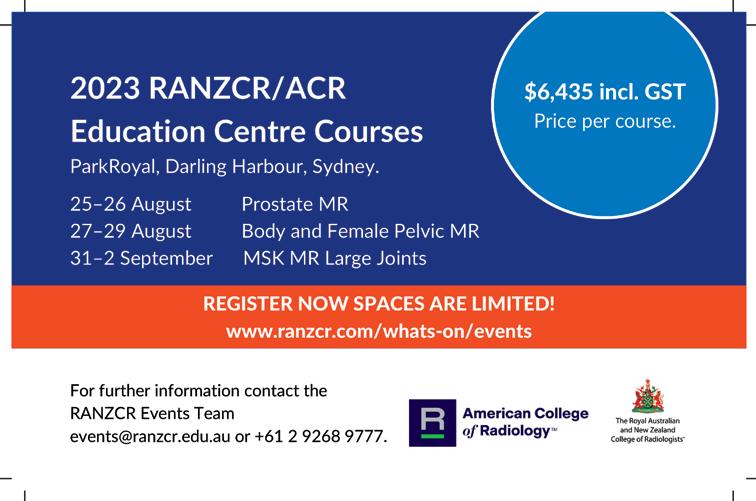
When lack of motivation and procrastination interfere with a trainee’s progress, both the trainee and their DOT may feel powerless to break the cycle. While a lot has been written on this subject, here is my view on what is helpful, based on my experience as a DOT and something of what the worlds of psychology and behavioural economics have to tell us.
This column is based on my experience as a former Director of Training (DOT) and issues that impacted the progression and well-being of my trainees. Approaches to problem-solving are drawn from my experience and a wide variety of resources. What follows is not intended to be a scientific article. I invite you to keep an open mind as we wade into unfamiliar territory.
It can be difficult for trainees to maintain high levels of motivation for extended periods, especially if they are confronting additional hurdles such as resitting exams. This can manifest as procrastination. As a DOT, it is easy to slip into unhelpful thinking that a trainee is their own worst enemy and that it is their problem to solve. So, what can be done about overcoming procrastination and what is the secret sauce of motivation?
Britt Frank is a psychotherapist, trauma specialist (not the kind that has a radiological correlate) and author of the book, The Science of Stuck: Breaking Through Inertia to Find Your Path Forward.
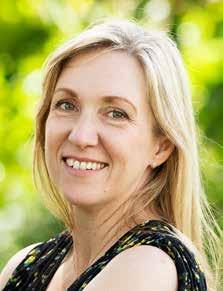
Frank asserts that procrastination is part of the physiological process that occurs when the brain is in threat state. Threat state is a term that psychologists use to describe what happens in response to a real or imagined threat. This is the fight/flight (sympathetic) or freeze (parasympathetic) response with which many people are familiar, when the amygdala is in charge of keeping us alive and the rational prefrontal cortex takes a back seat. Its physiological role is understandable in a situation that our ancestors would have faced, such as
being chased by a sabretoothed tiger. But our brains didn’t get the memo that we are no longer living on the savannah (or wherever sabretoothed cats lived) and our bodies respond in the same way to the relatively ‘small t’ threats that we face in the modern world. This means that our rational brain can check out and our emotional brain can run the show when presented with daily stressors such as listening to our kids fighting (or is that just me?), being challenged about a finding in a report, or having failed an exam and feeling powerless to effect change.
In line with what has previously been established about the autonomic nervous system’s role in threat state, Frank asserts that procrastination also aligns to sympathetic or parasympathetic processes, impacting behaviour in ways akin to an accelerator or brake. So, an actively procrastinating trainee may have a spotless apartment while the laptop remains unopened, and a passively procrastinating trainee may spend hours watching Netflix (I know, so 2011) instead of studying.
Importantly, the narratives that we attach to procrastination can sometimes reinforce the behaviour or may steer a DOT towards unhelpful thinking. The accomplishments of an active procrastinator may reinforce the behaviour through internal or external praise. A passive procrastinator may feel ashamed of their inferred laziness which, according to Frank, can lead to further release of cortisol and keep the brain in threat state. This is a good thing for trainees stuck in a procrastination cycle to know, but, as Frank says, “insight doesn’t get you moving”. So what does?
For the passive procrastinator, Frank describes the concept of a “microyes” to get started. This is a small enough commitment to not reinforce the brain’s threat state (think flicking through a “Radiology Case Review Series” book rather than memorising the pathophysiology and radiological correlates of Aspergillosis).
This is similar to ideas discussed in the excellent book, Atomic Habits, by James Clear, of which the central tenet is that small habits and micro-changes can be used as a way to effect big outcomes. Clear explores the means by which we can develop habits (of which automaticity is a defining feature) that reinforce our desired behaviours and discourage unhelpful behaviours.
Similar to Frank’s micro-yes, Clear proffers a ‘two minute rule’ as one approach, which is a commitment to do something for only two minutes. This can reduce unhelpful narrative and self-flagellation and, once the obstacle of starting is overcome, usually leads to more of the desired behaviour.
Clear also discusses the role of microhabits that determine bigger events and actions that follow. An example from the book is putting on activewear immediately after getting home from work, as a result of which he is more likely to go to the gym, compared with what happens if he sits on the sofa.
Frank’s solution to active procrastination is, perhaps counter-intuitively, to use more movement rather than trying to slow down. This aligns with methodology used in teaching children about emotional regulation, based on the work of psychologist, Daniel Siegal, and conforms with what we already
know about the role of movement and exercise in lowering stress hormones. Frank gives examples of fast air-typing for 30 seconds, running in place or pushing against a wall.
So, what of motivation? Frank says, “the biggest myth of motivation is that it is a mindset issue. Just like procrastination, motivation is physiological. Motivation is a state of your body doing and being and going. Motivation happens after you start doing the things, not before... It’s not like ‘once I feel it then I’ll do it’. Start doing it and then you’ll feel it.”
Similarly, Clear purports that 4050 per cent of our daily actions are performed out of habit, and that by deliberately establishing habits that are obvious, attractive, easy and satisfying, motivation becomes a non-issue.
One of the best pieces of advice that I was given as a junior DOT was from Radiation Oncologist, Prof Sandro Porceddu. Sandro’s advice was that it is helpful to remember that trainees are, by virtue of the qualities and achievements required for admission to training, highly motivated individuals. Failure to utilise a training opportunity, such as attending a tutorial, is more likely to be because they believe that their time would be better spent on something else, rather than evidence that they lack motivation or are not invested in their training.
Expanding on this, the best piece of advice that I can give to DOTs is that in order to help a trainee, you first have to get out of judgement and into empathy. As a DOT, if you can establish a trusting relationship with a trainee who is struggling, they are less likely to suffer
in silence. Sometimes, just knowing that someone has your back can be enough to inspire you into action.
For Trainees:
1. Procrastination is not a failing, but a sign that your body and brain are trying to tell you something. What is going on for you? Who can help? Is this something you could talk to your DOT about? A friend? Your GP?
2. Don’t set yourself up to fail by setting the bar too high up front. Small changes have big results. Find the micro-yes, commit to that and just start. The rest can follow.
For DOTs:
1. Procrastination is not evidence that your registrar is not committed, but that they need additional support.
2. Your trainee may benefit from your support in developing a study timetable or a list of resources to get started, providing an empathic ear and words of encouragement, or a recommendation of a coach or psychologist who has experience with specialty training programs and the high expectations placed on trainees.
Dr Jennifer ChangIt’s a situation every doctor dreads – a letter from Ahpra advising of a ‘notification’. If this happens, don’t panic. But don’t ignore the letter either.
Dr Lim was at work when he received a phone call from Ahpra advising that a notification had been received about him. Dr Lim was very shaken by the phone call and thought the matter must be serious because they had called him.
Dr Lim subsequently received a letter from Ahpra. The complaint was from the mother of a child whom he had seen earlier in the year.
I took my baby to Dr Lim as she was unwell with a fever and crying. He told me there was nothing wrong with my baby. Two days later, she was no better and I took her to another doctor who said she had an ear infection and needed antibiotics. Dr Lim should have done his job properly and given her antibiotics.
Dr Lim reviewed his notes and found them to be thorough. He had clearly documented his findings, including his examination of the baby’s ears which were not red. He had also suggested that the mother bring the child back for another review if she was not improving.
Dr Lim contacted MDA National and was assisted with providing a response to Ahpra. He provided an explanation of his assessment, explaining that at the time he saw the child there was no sign of an ear infection, and it was likely that the ear infection developed after he had seen the child. The Board decided to take no further action.
In the National Scheme, a concern raised about a registered health practitioner or student is called a notification. Ahpra manages notifications in partnership with the National Boards. In our experience, difficulties with communication are often a contributing factor.
References
1. Australian Health Practitioner Regulation Agency. 2018/19 Annual Report: https://www.ahpra.gov.au/Publications/Annual-reports/Annual-Report-2022.aspx
Ahpra has changed the way doctors first hear about notifications, and the first contact may be a phone call. This is not an indicator of the seriousness of the matter.
There are 131,953 registered medical practitioners in Australia.
8,146 registered medical practitioners (or 6.2%) had notifications made about them. Of the 5,874 notifications closed, no further action was taken in 58.2% of those notifications.
Clinical care 44.7%
Communication 14.1%
Medication 9.7%
However trivial a complaint may seem, a notification from Ahpra should always be responded to. We strongly recommend that you contact us immediately upon receiving contact from Ahpra (or another regulatory body) so that we can support and guide you.
Following assessment, the medical practitioner will be notified of what further action, if any, will be taken. This may include taking no further action or referring the matter for investigation. Following investigation, the Board has multiple options, including taking no further action, imposing conditions on the practitioner’s registration or referring the matter to a tribunal.
Receiving a phone call or letter from Ahpra can cause an emotional reaction and stress for many doctors. But remember that most notifications are dismissed with no further action.
You have made a huge contribution by volunteering with the College. What motivates you to volunteer?
It was a privilege to receive a government-subsidised higher education and then specialty training to work in a core healthcare role. I owe it to my colleagues, our next generations of trainees and our patients to contribute my time back into training, professional development, and healthcare advocacy. How does volunteering contribute to patient care, to colleagues, to the professions?
RANZCR SIGs and committee members directly give back to patient care through advocacy and policy changes on behalf of the specialty. We work hard to streamline bureaucratic processes for our colleagues (e.g. the Professional Practice Committee invested a lot of person time into the CPD transition, in response to the Medical Board of Australia’s mandated changes). We take feedback directly from hospital corridors or private practice tea rooms to RANZCR administration staff who are continuously adapting processes to satisfy legal requirements but made as easy as possible for Fellows.
Has volunteering given you skills and experience you could not otherwise have gained?
Stepping up to be the WA Branch Secretary and Treasurer in 2020 as a junior consultant was daunting at first; wrangling Professors and Directors who trained me since Medical School to now attend videoconferences or vote for my budget proposals has taught me brevity in e-mails (ask one question or ask for one action up front) and how to put forward the benefits of important budget spends.
Volunteering to the Editorial Board of JMIRO in 2022 has given me hands-on experience into another side of medical research – its publication process. Finding colleagues both willing and available to review submissions can be harder than you’d expect. Thankfully with our new CPD requirements and mandatory > 5 hours per annum of “Peer Review”, it’s been a relief to point out that a manuscript “Peer Review” counts!
I like to observe how my colleagues conduct themselves, especially in meetings. I really love working with Prof Dinesh Varma in the Professional Practice Committee, Prof Stacy Goergen in the Stillbirth Steering Group and Prof Liz Kenny; they’re all assertive experienced Chairs that get through a lot in a short amount of time but remain approachable and supportive as leaders. I look forward to their videoconference invites.
What achievements are you most satisfied with/proud of as a volunteer?
I am most proud of my colleagues at the RANZCR WA AGM in 2022 not only getting behind the RANZCR Board’s endorsement of our 2023 Sydney World Pride participation (literally marching in the parade) but voting to contribute financially. Small steps for me but giant leaps for the College.
Walking through RANZCR offices at Druitt St in the days before the parade and feeling celebrated by staff who, from WA, were previously ‘us and them’, made me realise that RANZCR is a community; we’re all members.
Seeing Melissa Doyle’s grin as she rehearsed my choreography for the World Pride Parade in centre frame for the ABC News when I was super stressed out about whether it’d come together reassured me that it would.

In 2022 in the Editorial Board meeting for JMIRO I was also heartened by our endorsement of the SAGER Guidelines for reporting the overlapping but distinct categorical variables of sex and gender. It makes a substantial difference for people who come from minority groups to not only get a seat at the table but to feel heard, or then accepted, but then celebrated. In 2023 we’ve now convened an Equity, Diversity and Inclusion Taskforce – we have the opportunity to take a leading role in healthcare in Australia and the colleagues involved in this group have such passion for our profession.
What has the pandemic meant for the volunteer experience?
For the WA Branch Executive we’ve transitioned to videoconference and email-based decision making rather than bi-monthly face-to-face meetings. For Part II examiners was challenging; having to examine our own state’s candidates and troubleshoot delivering an online exam without the support of appropriate college staff in the corridor outside or room next door.
What are the risks of burnout? How best are these managed, in your view?
All roles risk burnout. I’m a retired professional dancer; I’m used to investing completely in a role, and live and breathe it until the performance season ends and it suddenly ceases to exist. I manage my time best by giving things an end: serving only a defined term or taking a break. The college mandates only three committee positions which is a good solution to prevent being spread too thin.
Is burnout in health care being felt more keenly than ever in 2023?
I can only speak to my own lived experience and what I observe in my colleagues. We were all under immense external stress in early 2020 and we all adapted with the resources we had available. What I’ve taken away from the last three years is that the hospital work goes on without me and I’m not really missed. So, in 2023, I have been taking all leave entitlements and leaving my laptop and work at home when on vacation. I’d never done that before.
Do you have any advice on volunteering in general?
If you think, “I’d do a better job than that!” then, do it. Or provide what support you can to help the person who’s volunteered their time, to succeed.
Are there efficiencies to be gained in sharing the volunteer experience?
Undoubtedly there are many inefficiencies interstate and internationally within RANZCR as we often end up duplicating processess. Central coordination or networking could share knowledge and skills to adapt to local requirements.
What more can the College do to support volunteers?
I’d benefit from access to a RANZCR email address to connect with the SharePoint folders where I store WA Branch Minutes and Agendas but nobody else accesses or reads them.
How can the College best support collaboration and knowledge transfer? Providing the IT infrastructure but integrating what Fellows already use daily. If we had access to a RANZCR MS Teams account that could easily be used to disseminate information but collated into Teams (e.g. branches, JMIRO, PPC etc). Files could be stored and shared and the channels could replace long email chains. I already use MS 365 in public, private, and university appointments.
What are the perceived barriers to (particularly younger) Fellows taking on College volunteering activities?
As a medical specialty we are all products of what continues to be a hospital training system and, if younger Fellows are anything like me, they’d feel too green or not ‘grown up’ enough to volunteer. Perceived time commitments, especially for younger Fellows with young families, is a barrier that I hear voiced frequently. Making part-time volunteer roles or specified short-term expectations could be a solution.
Do you have a question for the next “volunteer in the spotlight”? Which trainees do you see taking on a leadership role when they get their letters, and what are you doing today to mentor them so that they do that?
Acclaimed speaker and award-winning author Li Cunxin AO will open the 2023 Annual Scientific Meeting in Brisbane (to be held 19 – 21 October) as the 2023 Nisbet Orator. In his runaway best-selling autobiography, Mao’s Last Dancer, Li recounts his determination, perseverance, vision, courage and hard work — and in particular, the sacred family values and integrity that he learned in poverty-stricken China — which has driven him to become one of the best dancers in the world. Li will draw on these strengths and values as he opens RANZCR ASM 2023.
That is just the opening session at this year’s ASM which will explore the theme ‘BEYOND’ and provide participants with thought provoking and engaging content beyond the clinical realms of radiology and radiation oncology.
More than 100 abstracts will be included in the ASM program complemented by a strong contingent of experts in radiation oncology and clinical radiology from across Australia, New Zealand and the globe.

We are pleased to welcome ASTRO President Jeff Michalski to Brisbane as the 2023 ASTRO representative. Dr Michalski’s research interests include radiation dose escalation in prostate cancer, conformal therapy to reduce toxicity and neuro-cognitive effects in children, assessment of quality of life in survivors of adult and childhood malignancies.

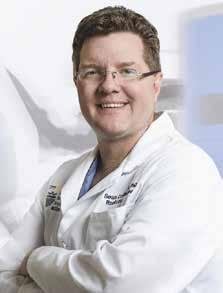
Internationally recognised expert in gastrointestinal (GI) cancers Professor Karyn Goodman of the Icahn School of Medicine at Mount Sinai will lead discussions on GI cancers and particularly her role in developing and leading clinical trials evaluating novel multidisciplinary approaches for GI cancers. Dr Goodman serves as the Co-Chair of the NCI GI Steering Committee where she helps to set the strategic priorities for the development of Phase II and III clinical trials in GI cancers conducted through the National Clinical Trials Network (NCTN).
Rounding out the in-person international speaker program we welcome back Professor Sean Collins who since joining us in Canberra at the 2018 ASM has further undertaken clinical work to develop prostate cancer treatment protocols using stereotactic body radiation therapy (SBRT) to minimizing the toxicity of radiation dose escalation and the use of CyberKnife to treat patients of prostate cancer.
The top 12 trainee abstracts nominated for the Varian Prize will be contested on topics ranging from Radiomic models for recurrence rates prediction in pharyngeal and laryngeal cancer patients treated with volumetric modulated arc therapy to deep learning segmentation of target volumes for locoregional breast cancer radiotherapy and efficacy of radiation on inoperable advanced/metastatic pancreatic cancer: review of treatment outcomes analysis and therapeutic efficacy evaluation. Be sure to keep an eye out for the full program and who will be one the finalists for this prestigious prize for Radiation Oncology trainees.
continued over...
“Beyond is a powerful word that evokes thoughts of going beyond our current limitations, reaching for something greater, and striving for excellence. It’s a call to action to push ourselves to be our best selves, to reach for our dreams, and to never settle for less.”
And
We have been working hard to create an extraordinary experience for the 2023 ASM.
Our dedicated wellbeing and leadership stream includes Craig Hassed, an internationally recognised expert in mindfulness and meditation. We will learn about imaging beyond death from Chris O’Donnell of the Victoria Institute for Forensic Medicine, and beyond borders from Suresh de Silva, the founder of Radiology Across Borders. Our scientific program, led by world renowned international as well as national speakers, covers all the big topics. Our international MSK speaker Mini Pathria will be teaming up with our national speaker James Linklater, covering the meaty lower limb MSK topics: bone stress, muscle injury, knee MRI tips and tricks, and hip tendon pathology, intra-articular hip pathology and ankle ligament injuries.
Beyond traditional diagnostic approaches, our international neuro speaker Christopher Filippi will be discussing advanced glymphatics imaging techniques — something special for those who value sleep. Cornelia Schaefer-Prokop, past president of the Fleischner Society, will be talking on the big three chest topics; namely lung cancer, ILD and AI.
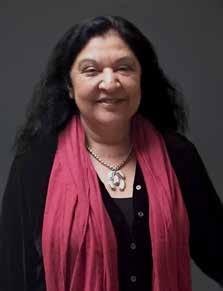
As we incorporate AI ever more into our working environment, we are planning talks not just on the implementation, but also on the medicolegal perspectives.
For the first time, we will have three days of dedicated Interventional and Interventional Neuroradiology streams, covering topics such as access, health economics, robotics, AI, embolotherapy, quality assurance and standards. The stream will also include combined sessions with IRSA, AMSIG, ANZSNR and ARGANZ.
We have listened to our colleagues, and this ASM will include plenty of casebased sessions, with MDT style sessions (including jointly with interventional radiology), a quiz-type Morbidity & Mortality case review session (prizes to be won), as well as ‘how I do it’ talks with reporting tips from experts in the field. We will test the abdominal
imaging knowledge of our delegates in a ‘Jeopardy’ quiz and pit them against the gut instinct of our international speaker Stuart Taylor, an expert on GI and oncology imaging.

That’s not to mention the social program and the fun run. Indeed, we think the ASM is the most fun a radiologist can have (while earning CPD).
Guests at this years Gala Dinner will experience a touch of Hollywood coming to Brisbane as the Plaza Ballroom is brought to life for a night on the town, Hollywood style! From the golden age of Marilyn Monroe and the Godfather to the modern-day Hollywood of George Clooney and Spiderman. Start to plan your options and be sure to look out for the social media posts with mood boards to help you plan.
Be sure to take advantage of the early bird savings now available until Monday 3 July. A variety of registration categories are available to encourage attendance. The ASM this year will not only provide attendees with content updates in clinical radiology and radiation oncology but additional topics on leadership skills, wellness and managing work-life balance. www.ranzcrasm.com

The RANZCR events team are in the process of planning a busy annual calendar of events in 2023.
All new events are loaded to the Events page on the RANZCR website following this link www.ranzcr.com/whats-on/events

VIC Branch ASM, Park Hyatt
Melbourne, VIC
22 July 2023
Register Here: Victoria Branch ASM 2023 |
RANZCR 6 RANZCR CPD hours
RANZCR NZ ASM, Millennium Hotel, Queenstown, NZ
11 – 13 August 2023
Early Bird Registration Open Now! https:// www.ranzcr2023.co.nz
CPD Hours calculated once program is finalised.
RANZCR/ACR Education Centre
Courses 2023, ParkRoyal Darling
Harbour, Sydney
25 – 26 August: Prostate MR. 16.5 RANZCR
CPD Hours
27 – 29 August: Body and Female Pelvic MR.
25.5 RANZCR CPD Hours
31 August – 2 September: Musculoskeletal MR. 25 RANZCR CPD Hours
Registration Now Open, Limited places available: Home (eventscloud.com)
RANZCR ASM, Brisbane Convention and Exhibition Centre, Brisbane, QLD
19 – 21 October 2023
Early Bird Registration Open Now! https:// www.ranzcrasm.com/ CPD Hours calculated once program is finalised.
ACR Institute for Radiologic Pathology
Courses, Crown Plaza, Sydney
18 – 19 November 2023
Save the date!
Radiation Oncology Phase 2 Course
24 November 2023
Save the date! Further information to follow.
Find details on these events and many more on our website: RANZCR Events Page.
For regular updates, in addition to the website listings, simply like and follow our RANZCR social media accounts:
If you have any questions relating to any College events, please contact the Conference & Events team at events@ranzcr.edu.au
Events are a great way to gain CPD hours!
The Radiation Oncology Research Committee has the role of promoting research within the field of radiation oncology. One of their many opportunities is the Withers and Peters Grant.
One of our many members who is enrolled in a higher research degree is Dr Vicky Chin. Dr Chin is a Radiation Oncologist at Liverpool and Macarthur Cancer Therapy Centres and is undertaking her PhD research at the Ingham Institute for Applied Medical Research and University of New South Wales.
Dr Chin obtained her Fellowship in 2019. Along the way, Dr Chin has added to her strong research portfolio with many peer-reviewed journal articles, international conference presentations, as well as a podcast on cardiotoxicity with the Thoracic Oncology Group Australasia.

The grant was named in honour of two eminent RANZCR Fellows, Professor Rodney Withers and Professor Lester Peters, both of whom have made major contributions to the field of radiation oncology and obtained national and international recognition for their achievements. The purpose of the Withers and Peters Grant is to promote the culture of radiation oncology research among Fellows and eligible trainees of the College, by supporting our most able and committed early career researchers to carry out significant research projects. It is hoped that recipients of this grant will go on to have careers in which research plays a significant role, to the benefit of patients, the recipients themselves, and the wider oncology community.
In 2020, the College awarded Dr Chin a Withers and Peters Grant, to develop a predictive model for cardiac morbidity and mortality in patients undergoing radiotherapy for breast and lung cancers. For her project she enrolled as a full time PhD research candidate. Dr Chin chats to RANZCR about her research.
The study aims to address the current gaps in knowledge in quantifying the risk of cardiac toxicity from thoracic radiotherapy. We do not fully understand the radiation sensitivities and dose constraints for the heart and its substructures (such as coronary arteries, heart valves, and the conduction system), and the impact of other contributing factors such as pre-existing cardiac disease on the risk of developing heart disease after radiotherapy. To address this our multidisciplinary team at Ingham Institute has developed and validated an automatic segmentation tool to delineate the heart and substructures on patient imaging. This allows us to understand the radiation doses delivered to this organ for patients who receive thoracic radiotherapy. We can then utilise data mining and data linkage methods to analyse large quantities of radiotherapy data, including cardiac dose distributions and link this with comorbidities and outcomes of patients treated for breast and lung cancer in NSW centres.
The grant award of $25,000 has been extremely valuable in helping to fund project-related costs and salary support for this project. It provided funds to progress this study, to develop research skills and hence opportunities for ongoing project collaborations in the future.
This research project has given me valuable skills in team collaboration, research translation and many other skills that I will take with me for the rest of my career. It gave me the opportunity to work with a multidisciplinary team that included medical physicists, computer scientists, software engineers, as well as colleagues from cardiology and radiation oncology. It has helped me develop knowledge in data mining, machine learning and statistical methods, as well as other skills I never expected e.g. Python coding and presenting at coding club to computer scientists! The project also highlighted the importance of translating research outcomes into optimal patient care – in this case, a better understanding of the cardiac effects of radiation treatment, to reduce the risk of treatment toxicity.
The skills that I gain as a result of this project will be particularly important in my career where I envisage research playing a significant role. It will enable me to collaborate with other researchers and institutions in implementing future studies and trials. I would like to thank my PhD supervisors Professor
Geoff Delaney and Professor Shalini Vinod as well as the awesome team at Ingham Medical Physics and many of the research colleagues that I have met during the course of this work. Learning from each other has been one of the most enjoyable parts of research, and I have definitely learnt new skills along the way. A big thank you to RANZCR and the Withers and Peters Grant for this opportunity.
Dr Vicky ChinWe go beyond simply meeting training requirements:
l Participants eligible to claim 40.75 RANZCR CPD hours for the Masters and 23.75 RANZCR CPD hours for the Recertification course.
l Maximum allowable course based live and library cases for ANZ credentialing.
l Clinician led teaching by high volume operators.
l State of the art low dose, High Definition imaging.

l Unrivalled venue and catering.
2023 COURSE DATES:
5 Day Level A Course
9th - 13th November
3 Day Recertification Course
11th - 13th November
For more information and online registration log on to: www.aicct.com.au or contact us at: info@aicct.com.au
It gave me the opportunity to work with a multidisciplinary team... and also highlighted the importance of translating research outcomes into optimal patient care.
RANZCR members now have the option to support their research articles published in JMIRO with the production of a video short.
The College has sponsored the extra service which translates research findings into an engaging and accessible overview that’s perfect for sharing on websites and social media, thereby extending the reach and visibility of members’ research and promoting their articles. Video shorts will be posted alongside the published article on the Wiley Online Library and Wiley’s YouTube channel, and can be made available for use on social media and elsewhere through Wiley, JMIRO and RANZCR.
If authors choose to take advantage of this valuable addition to the publication their work, they will be able to work with the Wiley Editing Services video creation team on the scope of the video, and review it before finalising it for sharing.
For a look at sample video shorts, visit https://wileyeditingservices. com/en/article-promotion/ video-creation
JMIRO, RANZCR’s flagship peer-review journal is to include a new subsection on interventional radiology (IR) and interventional neuroradiology (INR) research in Australia and New Zealand. This decision highlights the importance of the interventional specialties of radiology in the region and means that there will now be a formalised platform for the distribution of local and international, high-quality academic research in these subject areas.
In introducing the new subsection, JMIRO joins a growing list of international journals that are wholly or partly dedicated to presenting IR and INR research. Manuscripts in the field of IR and INR have featured in many special issues of JMIRO over the years, and feature regularly within the journal’s existing Medical Imaging (Clinical Radiology) subsection. However, the addition of the new subsection reflects on and supports the advocacy of RANZCR in promoting IR and INR as separate, growing and increasingly important fields of specialty practice.
In addition to IR and INR, the locally and internationally derived articles in the new subsection will cover interventional oncology, musculoskeletal IR, paediatric IR and more. Manuscripts will also canvass broader governance issues of quality and guidelines, as well as the range of regular clinical submissions such as original research, review articles, technical notes, pictorial essays, case letters and viewpoints.
to research and a wide range of relevant committees, boards and panels.
“While voluntary back then, the inclusion of a consumer voice in cancer research is now mandatory and demonstrates the extent to which the consumer perspective is valued and respected,” says Hunt. When asked why consumer representation is so important, Hunt is unequivocal.
“Including those with a lived experience of cancer in decision making is absolutely critical. Consumers add value to all aspects of the patient journey –from diagnosis through treatment and beyond, and research,” she says.
As to what most surprised her about radiology and radiation oncology, Hunt cites the complexities and technical aspects involved and notes the strides made in diagnoses, treatments and outcomes since her initial involvement.
“It’s been very satisfying to see how far cancer treatment has come over the years, from improvements in processes and systems, to seeing the research I’ve been involved with through clinical trials come to fruition,” she says. “Most of all, it’s seeing the impacts these have had on improving the patient experience.”
Hunt offers the following advice on how RANZCR could improve its consumer engagement.
After eight years as a Consumer Representative for RANZCR’s Faculty of Radiation Oncology Council, Lee Hunt has stepped down from this role. However, she has by no means stepped away from her outstanding commitment to improving the care of and health outcomes for cancer patients.
It is this commitment that will see Hunt continue her consumer advocacy work and contributions to research, where she is currently involved in the clinical trial phase of three research projects.
Hunt’s own journey in consumer advocacy began with her cancer diagnosis in 2005 and her subsequent involvement with Cancer Voices NSW, an independent organisation that represents the needs and issues of people affected by cancer.
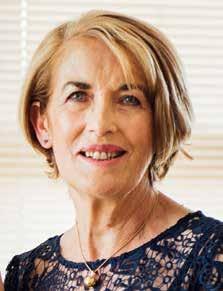
Through Cancer Council NSW, she received training and guidance in contributing a consumer perspective
“We can ask the questions that no one else does, share our individual experiences of treatment and its side effects, report on what has worked or not worked and which aspects of care have been most supportive.”
In Hunt’s view, reciprocity and genuine partnership is the key to successful consumer representation.
“While it’s been a huge commitment of time and energy, it has also been a great experience. I’ve felt that my perspectives and views were genuinely valued and taken seriously which has made this a very empowering experience.”
Hunt has been involved in diverse issues including the Medicare Benefits Schedule review, the Radiation Oncology Targeting Cancer campaign, Faculty Council and numerous research projects and clinical trials. She estimates that she has worked with between 50 and 60 clinicians during her tenure at RANZCR.
“For me, it’s been particularly important to represent people who don’t have a voice. Patients need to be included in the patient journey and have a voice in how the health system works,” she says.
“If anything, I’d encourage RANZCR to include consumer representatives on every committee where possible. I’d also recommend that trainees speak to those with lived experience during their training, so they can benefit from this perspective early on,” she says.
Asked whether she would recommend the role of consumer representative with RANZCR to others, Hunt comments “Absolutely! RANZCR is a great example of an organisation that is very genuine in its consumer engagement and in acting on this input. Without exception, they have been very supportive of the role, and I have always felt my voice was valued.”
The Australian Digital Health Agency (the Agency) aims to create a collaborative environment to accelerate adoption and use of innovative digital services and technologies. They hope to create a healthier future for Australians through connected healthcare.
better coordination of care for people with chronic and complex conditions, and better-informed treatment decisions.
In the 2023 Australian Government budget $951.2 million has been announced for digital health over four years including:
• the continuation of the Australian Digital Health Agency
• revitalisation of My Health Record
• investment in standards
was later used by the Agency in a proofof-concept trial of an electronic referral system for diagnostic imaging services. Work continues to build the RRS and connected projects including work on digital health standards.
The 2023—24 budget highlighted the significant role of the Agency in fulfilling the Australian Government’s commitment to strengthening Medicare and reducing healthcare expenses for consumers through digital enablement. This budget positioned the Agency as the guardian of the nation’s digital health infrastructure, emphasising its responsibility in delivering on this objective.
Digital health is a broad term that relates to the use of technology in healthcare. It can include concepts such as improving patient access to health information online, streamlining information sharing between providers, e-referrals and telehealth services.
Digital information is the bedrock of high-quality healthcare and has exponentially grown during the last few years. The benefits for patients are significant and compelling: fewer hospital admissions, fewer adverse drug events, reduced duplication of tests,
Investment in standards will allow for collaboration with key sector stakeholders to design a national eRequesting capability. This work includes establishing the clinical terminology, exchange standards and technical requirements, with a whole of healthcare focus to enable connected care. The College commends this decision and looks forward to continuing the work already commenced with the Department of Health and Aged Care, Australian Digital Health Agency and other stakeholders in this space.
The Agency is the custodian for the National Digital Health Strategy. The National Digital Health Strategy is establishing the foundations for a sustainable health system that constantly improves. It underpins and coordinates work that is already happening between governments, healthcare providers, consumers, innovators, and the technology industry.
In 2021-2022 the Agency worked closely with the College on furthering digital health interoperability. The initiative began with the formation of a commission tasked with leading a research project to identify a suitable existing Radiology Referral Set through landscape analysis, to be adopted for use. A second project was undertaken to develop standards and a sample set for the Radiology Referral Set (RRS) which
My Health Record is a secure online summary of key health information, first launched in 2012 as the Personally Controlled Electronic Health Record. As at March 2023, there are currently more than 23 million My Health Records, and the number of records with data increased by 700,000 in the last year.*
The task of upgrading the My Health Record System and collaborating with software vendors to enable default uploading of all health information to My Health Record, as recommended by the Strengthening Medicare Taskforce report, has been assigned to the Australian Digital Health Agency.
The Agency will focus to progressively implement requirements for healthcare providers to share key health information to My Health Record by default commencing with pathology and diagnostic imaging reports. Uploading and making My Health Record information available is essential for ensuring its usefulness and fulfilling its intended purpose. The launch of my health app in March 2023 further enhances the ability for consumers and healthcare providers to view key health information that has been uploaded to My Health Record in a fast, easy and secure manner. Useful resources are linked in the right hand side of this article for how to go about participating with My Health Record. Further work will also be carried out to increase the usability of My Health Record for both consumers and health care professionals.
*https://www.digitalhealth.gov.au/initiatives-andprograms/my-health-record/statistics
“When it comes to improving the health of all Australians, the role of digital innovation and connection is a vital part of a modern, accessible healthcare system.
~ Australian Digital Health Agency
The Digital Health Committee and the Agency would like to understand members’ perspective of My Health Record and digital health and welcome feedback via this short survey www.surveymonkey.com/r/W3G8V7P

PARTICIPATE
a) Adopt a My Health Record security and access policy
b) Register organisation for My Health Record
The agency publishes a list of participating providers with My Health Record
c) Software configuration
this requires organisation and provider identifiers and working with a conformant software product that can publish the imaging report to MHR
d) Train staff prior to use – Australian Digital Health Agency - Online Training has some great resources developed with key stakeholders
More info at www.digitalhealth.gov.au/healthcare-providers/initiatives-and-programs/myhealth-record/implementing-my-health-record-in-your-healthcare-organisation
Australian Digital Health Agency publish a list of conformant software products.
They currently include:
Comrad
Contrast ONE RIS
Healthinc OCCAM
Kestral Karisma
Pro Medicus Visage
Voyager Imaging
Zed Technologies (Medinexus)
Our 2023 ASM theme of “Beyond” aims to extend our experience beyond the limitations of the image or technical constraints for each of our specialties.
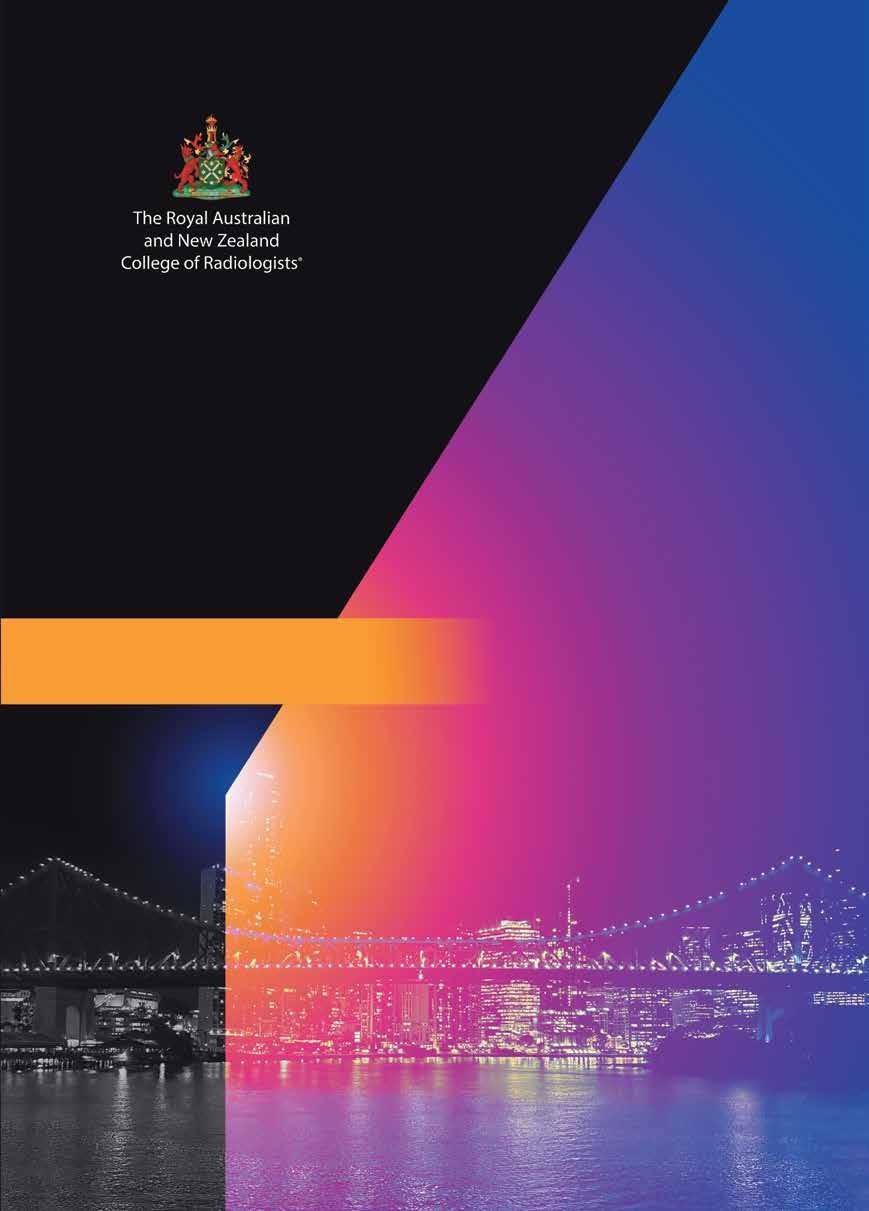
Collaborations with our fellow clinicians are becoming increasingly important in the face of advancing medical knowledge and technology, and for ensuring best patient outcomes in the era of personalised medicine.
Multidisciplinary sessions bridging across clinical radiology, radiation oncology and interventional oncology will form a keystone for our scientific program. We want to emphasise that clinical radiology and radiation oncology need to be a driving force in advancing patient care, and in building comprehensive healthcare teams.
We hope our program delivers beyond the day-to-day of our disciplines and provides a vision for innovative quality health care.
Dr Liat Barrett & Dr Angela Allen & Dr Jennie Roberts Dr Tuan Ha Clinical Radiology Radiation Oncology

The Targeting Cancer Fun Run is coming to Brisbane on the early morning of 21st October during the 73rd RANZCR Annual Scientific Meeting.

Running or strolling in the morning twilight along the Brisbane River is guaranteed to energise the start of your busy conference day at our ASM. Choose between a 5km Fun Run or 3km Family Run to suit your fitness level. The fastest male runner and female runner will each be awarded prizes valued at $250, and the 8th registered runner will receive a mystery prize marking the 8th anniversary of the Fun Run.
As one of the most iconic events of RANZCR Annual Scientific Meetings, the Targeting Cancer Fun Run is well known for its purpose of raising awareness of radiation therapy as an effective, safe and sophisticated treatment for cancer, bringing the radiation oncology community together to demonstrate their support for the Targeting Cancer Campaign in actions. Last year’s Fun Run at our Annual Scientific Meeting in Adelaide welcomed a record number of runners from both clinical radiology and the radiation oncology community.
Registration will open soon. Check Targeting Cancer Campaign website and social media for more information and updates.

Targeting Cancer Fun Run 2023 is made possible by GenesisCare.
Watch our ASM promo video here:
August 11-13 2023
NEW
MILLENNIUM & COPTHORNE HOTELS QUEENSTOWN

KEYNOTE SPEAKERS
Clinical Radiology
Prof Giuseppe Brancatelli Professor of Radiology, University of Palermo, Italy
Dr Sharyn MacDonald
Waitaha Canterbury, New Zealand
Dr Mike Bynevelt
Neurological Intervention & Imaging Service of Western Australia (NIISwa), Australia
Radiation Oncology
Prof Jarad Martin Calvary Mater Hospital, Australia
KEY DATES
Registration and abstract submissions open – Now Open
Abstract submissions close – 25 June 2023
Earlybird registrations close – 9 July 2023
www.ranzcr2023.co.nz

using the ‘Birthday Ballot.’ This forced selective conscription based on birth dates was used to draft 63,740 young men into the army. Combined with ongoing televised footage of livecombat and daily news articles detailing injuries or death, general dissatisfaction grew. The Vietnam War quickly became widely seen as a war not for Australia’s involvement. Nation-wide protests began and many resisted being drafted. This also, unfortunately, resulted in soldiers meeting a hostile reception on their return home.
The fallout from the war onto Vietnam and the surrounding areas, such as Cambodia and Laos can not be ignored. Civilians lost their lives, and millions became refugees as a direct effect of the War. Chemicals used during the war, such as Agent Orange, have caused long-lasting negative effects on the region and many still experience symptoms today.
We all have varying reactions when commemorative days like ANZAC Day or Remembrance Day come into the forefront of our minds and public culture. For some of us, it recalls the sacrifices those who came before us made, and who some continue to pay through ongoing illnesses or disabilities. Radiology has always played an important role in war. The First World War was one of the first real tests of the ‘new’ technology of x-rays. Army medical professionals had to become experts while dealing with the sheer number of incoming patients with time sensitive injuries, and due to their efforts, lives were saved.
Recently, The Trainor/Owen Collection has received a donation from the 1st (Aust) Field Hospital Association
Incorporated. The donated book, Call Sign Vampire, highlights the stories from an Australian Field Hospital during the Vietnam War located in Vung Tau. The hospital was in operation from April 1968 until November 1971.
From 1962 to 1973, approximately 60,000 Australians served in Vietnam. More than 500 lost their lives, with a further 3,000 wounded, injured or victims of illness and therefore requiring hospitalisation. The Vietnam War was Australia’s longest 20th century conflict involving active participation.
In Australia, all young men aged 20 were required to register with the Department of Labor and National Service. Their names were then selected
By many accounts, The Vietnam War was a social and political disaster.
Initially, Australian troops received medical care from the US naval hospital in Saigon, or by US army hospitals. Due to the building up of forces, notably due to the conscripted forces coming in, the First Australian Field Hospital was established in 1967.
Casualties that required operation were processed through the triage and underwent three major processes: Resuscitation, blood cross matching and x-ray procedures. X-ray was the only investigative tool available to medical professionals. In the quarter ending June 1969, 997 patients were x-rayed and on average needed 2 films per
continued on page 37...
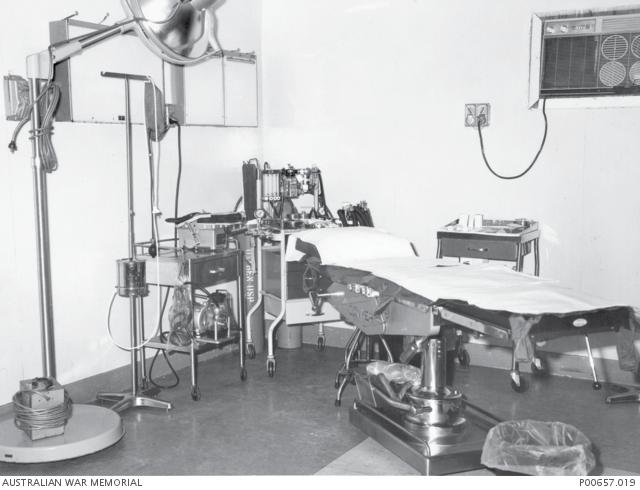
RANZCR is pleased to announce that the Assistant Minister for Health, Hon Ged Kearney, will be providing the opening address at the Perinatal PostMortem Imaging Workshop from 4-5 August at the Royce Hotel in Melbourne.

The Perinatal Post-Mortem Imaging Workshop will equip clinicians with the necessary knowledge to set up and manage a perinatal post-mortem imaging service.
The workshop is an advanced course preluded by the foundational six-part Perinatal Post-mortem Imaging Webinar Series. Attendees must have viewed all six webinars as prerequisite learning for the workshop.
Professor Stacy Goergen will host key speakers Professor Owen Arthurs, Professor Teresa Victoria and Professor Willemijn Klein. Opening session speakers will include Keren Ludski, CEO of Red Nose Australia as well as leaders of the Stillbirth Centre for Research Excellence and experts in perinatal pathology, neonatology and bereavement midwifery.
Clinicians will be provided access to a DICOM imaging software application to assist with in depth case review delivered on day two.
Registrations for the workshop are limited!
To learn more and to register for the Perinatal Post-Mortem Imaging Workshop Advanced Course visit www.ranzcr.com/whats-on/events

patient. X-rays were used on inpatients and outpatients as well as to determine cause of death for some diggers. A heavy portable x-ray machine was used and as Rob Lennox, the in-house radiographer, recalls ‘All film processing was performed manually. The resultant x-rays were ‘far from perfect’1 At this point, no radiologist had been stationed at the hospital. Films that the clinicians could not interpret was referred to the US Radiologist based nearby.
In March of 1970, Colonel Charles Stuart, a notable Australian radiologist and co-editor of The Proceedings of the College of Radiologists of Australasia (later known as Australasian Radiology) volunteered for service. His subsequent report was the first by a qualified radiologist working in a field unit overseas to have appeared in the fifty years since World War Two. Notable inclusions in his report include a detailed itinerary of the x-ray equipment, immediate needs, and types of battle casualties.
The hospital and medical staff were not just catering to and caring for the Australian soldiers. Locals, including children, Taiwanese fisherman, Embassy Staff, Allied civilians and Viet Cong soldiers also entered the hospital as patients. Care was provided for all.
techamatic radiology was field tested in Vietnam. It involved providing radiologists from the Medical Education Project and radiographers to support Vietnamese radiologists and nine machines which produced simple, good quality plain film of chest, abdomen, limbs, skull and spine. The training provided varied from a few days to several weeks, depending on the experience of the trainee. The training courses came to an end in 1975 due to the fall of the South Vietnamese Government.
I believe this speaks to the ‘higher cause’ medical clinicians answer to. Despite the surrounds of conflict, medical care was provided. In the fallout of war, an attempt was made to provide training to those who required it.
By late 1970, due to ongoing pressure, Australian troops began to withdraw. Australia’s involvement in the Vietnam War formally came to an end on January 11th, 1973.
Despite the war ending, Australia’s medical support did not. Under the Colombo Plan, between 1970-1975 a primary-care radiology service called
The Trainor Trust thanks the 1st (Aust) Field Hospital Association Incorporated for their donation and their efforts in bringing to light the stories from the Australian Field Hospital during the Vietnam War.

If you have any queries or wish to donate to the Trainor Owen Collection, please contact the College Archivist.
Natasha Ramrakha archives@ranzcr.edu.auYou are there to heal and if the enemy came in, he’d get the same treatment... No, I didn’t have an enemy
~ Brian Cornish (Searle et al., 2021. p139)1. Searle et al., 2021.p116
The momentum around the work of the Interventional Radiology Committee (IRC) continues to build as RANZCR progresses its work towards advancing Interventional Radiology (IR) and Interventional Neuroradiology (INR) in Australia and New Zealand.
The IRC is a standing committee of the Faculty of Clinical Radiology and provides advice to Council on interventional related matters. The Committee’s overarching aim is to elevate the practise of IR and INR within the college and throughout Australia/ New Zealand, and the IRC has worked tirelessly since 2017 to develop the necessary foundations to improve clinical practise, develop formalised training programs and qualifications for IR and INR, and advocate for the recognition of IR and INR as formal clinical specialties.
The development of two accredited, contemporary IR and INR Training Programs, which will be expected to be endorsed by both RANZCR, the Australian Medical Council (AMC) and the Medical Council of New Zealand, leading to formal qualifications in IR and INR, has also been continued under the IRC by the IR and INR Training Pathway Working Group. These significant developments will add considerably to the platforms from which recognition of IR and INR as Fields of Specialty Practise are being launched. Currently, RANZCR is the custodian of the following specialist titles: Specialist Radiologist, Specialist in Nuclear Medicine and Specialist Radiation Oncologist.
RANZCR is proposing the addition of two new fields of practice with specialist medical titles, that is, Specialist Interventional Radiologist and Specialist Interventional Neuroradiologist (See figure 1).
Before specialty recognition:
After
Recognition:
RANZCR is currently planning for the annual scientific meeting from 19-21 October in Brisbane this year, and for the first time there will be a dedicated IR and INR stream across the program. Don’t miss out and register now at www. ranzcrasm.com
We are also very excited to announce that JMIRO, the College’s official journal will now publish articles of excellence in interventional radiology and interventional neuroradiology. This will be a new subsection for IR and INR
research and joins a growing list of international journals that are wholly or partly dedicated to disseminating highquality academic research in IR and INR.

Engaging with College members through the work of the IRC and keeping members abreast of the inroads being made for Interventional Radiology and Interventional Neuroradiology is of utmost priority for the IRC. We are always seeking ways to improve our communication with members, and the need for accurate flow of information
concerning our achievements, opportunities and challenges. It is equally important that there be a twoway flow of information and we strongly encourage members to provide us with any feedback, ideas or concerns. This will allow us to respond and pivot to issues that are important to College members.
If you would like to get in touch, please contact us at interventional@ranzcr.edu.au
On behalf of the IRSA Executive team, and the 2023 Convenor, Dr Paul Leschke, we are excited to announce that nominations are open for RANZCR trainees to attend this year’s IRSA Registrar Conference. The Conference will be held at the Sunshine Coast University Hospital QLD on Saturday 18 and Sunday 19 November 2023.
The Conference is aimed at RANZCR trainees with an interest in pursuing a career in IR and INR.
Over the course of the weekend, we will be running didactic lectures given by a local faculty team of leading Interventional Radiologists and Interventional Neuroradiologists.
The program will also include a mix of hands-on workshops hosted by our industry partners showcasing the latest products, and technology available. Airfares, Conference registration, a Conference dinner and accommodation will be provided for those attending. Directors of Training have been asked to nominate up to 3 interested trainees to attend (in order of preference). If you are interested in attending, please discuss this with your DoT. Should you have any questions about the event, or wish to discuss nominations, please contact secretariat@irsa.com.au
RANZCR Trainees are reminded about IRSA membership. IRSA members are entitled to a wide range of benefits including, discounted ASM registration, International affiliate membership with SIR and CIRSE, access to branch education events, networking opportunities and IR resources and supports.
IRSA membership is heavily subsided for student members, at only $170 per year. To join now, visit www. irsa.com.au/join-us
Enjoy a less taxing radiology career - join our growing community of Everlight teleradiologists in Dubai.

We’re looking for experienced FRANZCR Consultant Radiologists to join our state-of-the-art reporting hub in Dubai.
Experience the perfect balance of challenging clinical work and tax-free remuneration, coupled with a family-friendly lifestyle in this sunshine-soaked gateway to the world.

• Family friendly destination with first-class schools and high living standards.
• Range of lifestyle and leisure activities, from shopping and restaurants to beaches and sports.



• Access to our reporting hub located in the heart of Dubai’s business district.
• Your gateway to over 260 destinations, giving you easy access to worldwide travel.
• Enjoy a diverse and challenging case mix.
• Report emergency and routine cases for patients across Australia and NZ.
• Never work another night shift, report in your normal waking hours.
• Join our close-knit community of Everlight Radiologists and support staff in the UAE.
• Receive mentoring and development from our Medical Leadership Council.
Talk to an Everlight Recruitment Consultant today
“As an Everlight Radiologist in Dubai, you have more control over your time and lifestyle. If you were going to go to the beach or the desert, you can pick the day weeks in advance because you know how you are going to work. I don’t work weekends or evenings, and that’s by design. I couldn’t get that in my previous job. In fact, I couldn’t get a timetable two weeks in advance.”
Everlight Radiologist based in Dubai



phone: 0428 938 466 | email: bball@everlightradiology.com | www.everlightradiology.com/careers/dubai
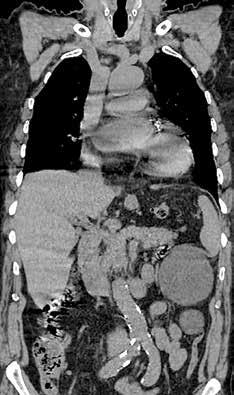
Take your work/life to a whole new place. Dubai.
With the overarching objective of advancing diagnostic and interventional radiology in Australia and New Zealand, the Faculty of Clinical Radiology Council plays a pivotal role in promoting the profession to government, the wider medical system and the public.
As the apex College body in radiology across both nations, the Faculty of Clinical Radiology Council has established standing and advisory committees that undertake an extraordinary amount of work, encompassing the breadth and depth of clinical radiology practice across the clinicians’ journey from pre-fellowship through to radiology in practice.
The FCR Council is chaired by the Dean and reports to the College Board. Visit the Committees page on the RANZCR website for more detail.
Besides elected members from Australia and New Zealand, the Chief Censor, Chief of Professional Practice, a trainee representative and a consumer representative sit on the Council.
The College is extremely fortunate in having the calibre, expertise, and enthusiasm of each of the Faculty Councillors and their shared commitment to guiding the development and growth of the profession.
This is reflected in the many hours each contributes, the thoughtful deliberations and animated discussions that occur and the continued policy and advocacy work undertaken. All councillors also sit on various committees and serve as conduits between committees and council.
As Dean, it is my pleasure to introduce the members of the Faculty Council.
DR ANDREW CHEUNG
Arian is a Radiologist in the Department of Cancer Imaging, Head of Radiology Research, and Co-Head of MRI at Melbourne’s Peter MacCallum Cancer Centre.
Dr Andrew Cheung is the FCR councillor for NSW, co-chair for the Interventional Radiology and Interventional Neuroradiology Training Pathway Working Group, a member of the Interventional Radiology Committee and a member of the Professional Practice Committee.
He is the clinical lead for Interventional Neuroradiology at Liverpool Hospital and Prince of Wales Hospital and a Diagnostic Neuroradiologist at Prince of Wales Hospital.
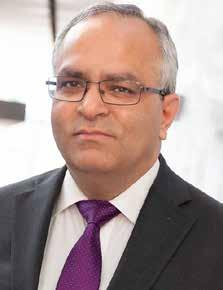
He has a particular interest in neurooncologic MRI, including for the pre-operative molecular classification of adult intracranial gliomas, detection and characterisation of early intracranial metastatic disease, and improving the diagnosis of intracranial post-treatment effects.
His awards include the prestigious MSD Hubert Stuerzl Memorial Educational Award from the Cooperative Trials Groups for Neuro-Oncology, and Foundation Discovery Partner Fellowship from the Peter MacCallum Cancer Foundation.

Dr Barry Soans is a Newcastle-based Radiologist and is Clinical Director at John Hunter Hospital and the current Chief Censor in Clinical Radiology. He has subspecialty interests in Thoracic and Cardiac imaging, Medical Administration and Medical Education and has previously held the role of Chief Examiner and Deputy Chief Censor (Examinations).
Dr Jane McEniery is a Brisbane-based Paediatric and General Radiologist and is particularly interested in Paediatrics, Neuro-oncology, MSK and Paediatric Post Mortem imaging.
She is the Branch Education Officer for RANZCR Queensland, RANZCR Examiner in Paediatrics and is also involved in the Queensland Women in Radiology professional network.

Melissa brings a valuable health consumer perspective as a member of the Council where she is dedicated to enhancing the outcomes and experience of care for patients, their families, and those providing the care.
Prof Dinesh Varma is Deputy Director and Head of Trauma and Emergency Radiology at the Alfred Hospital Melbourne.

Dinesh is the Chief of Professional Practice (CR), RANZCR; President Elect Australian and New Zealand Trauma Society; and Deputy Chair, Traumatic Brain Injury (TBI) Mission, MRFF, Australian Government.

Dr Mark Phillips is a Senior Staff Specialist in Paediatric Imaging at the Queensland Children’s Hospital and Gold Coast University Hospital, a senior lecturer for the University of Queensland, and also works for Lumus Imaging.
Mark is the current deputy Chief Censor of Radiology, Chief Examiner, Queensland Faculty Councillor, current Queensland Branch chair and the Clinical Radiology Examination Advisory Committee (CREAC) chair.



A/Prof Meredith Thomas is the Lead for Emergency and Trauma Radiology at the Royal Adelaide Hospital and works for Everlight Radiology. As an A/Professor at the University of Adelaide, she is very involved in creating and delivering a new Bachelor of Medial Studies, Doctor of Medicine program.
Meredith has contributed to RANZCR over many years including her previous role as Clinical Radiology Chief Censor, and is currently the South Australian Branch Education Officer, Executive Committee member ANZERG, examiner and accreditation assessor.

Dr Gavin Mackie has previously been a member of the RANZCR’s Clinical Radiology Workforce Committee and the Committee for Joint College Training in Nuclear Medicine.
He lives in Hobart and works in both the public and private sectors.
Melissa is highly experienced in governance, healthcare, regulation, and innovation, serving on a variety of national and South Australian boards and committees.
With a special interest in breast imaging, Dr Mike Baker is a founding radiologist at TRG Imaging and Auckland Breast Centre and has worked at North Shore Hospital in Auckland for 25 years.
He is a member of the New Zealand Branch Committee, and Chair of the Medical Imaging Professional Advisory Committee for IANZ, NZ’s accreditation authority. Mike was also instrumental in establishing the NZ Radiology Education Trust.
He was awarded Life Membership of RANZCR in 2022 in recognition of his service to the College and the profession.

Ronny is a Perth-based radiologist at Fiona Stanley Hospital and privately, his main focus is urogenital and abdominal imaging. After completing his radiology training in WA, he spent three years working in Sydney before returning west and has recently taken up the role of Network Training Director. He has been a Faculty Councillor since 2019 and is currently Chair of the Iodinated Contrast Working Group, and CT Reference Group.
He is also an Adjunct Clinical Associate Professor at Curtin University Medical School and has had a variety of hospital appointments as a Radiologist in both Australia and New Zealand.
Dr Sanjay Hettige is a third-year radiology registrar at Sydney’s Nepean Hospital and current chair of the Clinical Radiology Trainee Committee. Sanjay has been an advocate for doctors-in-training in NSW throughout his medical career, playing a key role in establishing the annual Hospital Health Check Survey. In 2022, he won the AMA’s Doctor in Training of the Year Award for his outstanding contribution to leadership and advocacy.

And finally, a little about me. Currently I am Clinical Director of Radiology and Nuclear Medicine at CCLHD (NSW), Conjoint Lecturer at the School of Medicine, University of Newcastle, and have been associated with the Sydney Interventional Radiology (SIRA) and the Sydney Adventist Hospital.

My interests include thoracic imaging, emergency radiology, teaching, and medical administration. I have been on FCR for 7 years now. Before taking up the role of Dean this year, I have held several College roles.
A/Prof Ross O’Neil is currently a Senior Salaried Specialist at The Canberra Hospital. He has a special interest in Thoracic Radiology, is a member of the Society of Thoracic Radiology and lectures at the Australian National University Medical School.
Ross has contributed to RANZCR over many years, as a Part II Examiner, the ACT Branch Education Officer, Director of Training Canberra Hospital, as a Faculty Councillor and ACT Branch Chairperson and Treasurer.

Ronny Low Perth, WA
Sanjay Jeganathan Perth, WA
Clinical Associate Professor Sanjay Jeganathan is based in Australia. He presently holds the professional positions of RANZCR President and board member, radiologist at Perth Radiological Clinic, and Consultant Radiologist at two other Perth hospitals.


Melissa Cadzow
Adelaide, SA
Meredith Thomas
Adelaide, SA
Gavin
Jane McEniery Brisbane, QLD
Mark Phillips Brisbane, QLD
Andrew Cheung NSW
Barry Soans Central Coast, NSW
Sanjay Hettige Penrith, NSW
Rajiv Rattan Sydney, NSW
their learning, including those who passed the exams but still have areas identified for improvement.
New examination rules
EXAMS Results
Pass rates for the new Case Reporting exam were significantly higher than previously which indicate that the new, improved format is better aligned to training and more accurately reflects our everyday work as radiologists.
The pass rates for the new Pathology exam and the Clinical Radiology MCQ exam were similar to previous sittings.
All candidates received more comprehensive and tailored feedback in their letters this sitting, including information on their performance in specific topic areas (examination components) in all three exams.
We encourage all trainees and IMGs make use of this information to enhance
They will be implemented for the Second Sitting 2023.
• Trainees are allowed a maximum of:
o 48 months FTE accredited training time in phase 2 (irrespective of time in phase1).
o 3 attempts at each examination however the attempts no longer need to be consecutive. Trainees are still required to pass all written exams before presenting to the OSCERs.
• The Interrupted and Part Time Training Policy will also be amended to allow trainees to sit examinations whilst on a break in training. This is a significant change and provides even more flexibility.
• IMGs will have the same exam rules as trainees and will now be eligible to begin sitting Phase 2 examinations from the time of commencing upskilling positions.

These changes acknowledge the reallife circumstances for many trainees and
IMGs and seek to provide a fairer and less pressured training and examination experience.
WORK BASED ASSESSMENTS
The Clinical Radiology Education and Training Committee have agreed to reduce the number of Reporting Work Based Assessments (WBAs) required for each six -month period from 20 to 10.
The Critically Appraised Topics (CATs) forms will now require just one signature from the elected assessor, rather than a physical signature from both assessors. Also, the task of electing responders to the MSF form will now sit with the trainee instead of the DoTs.
ACCREDITATION
continued on page 60...
The Professional Practice Committee (PPC) has completed its second meeting for the year and the work it’s prioritising is moving forward with high productivity. A few worthy of an update at this time are:
We are now halfway through the 2023 CPD year! Have you started entering your CPD activities? How are you tracking towards meeting CPD requirements? The annual CPD cycle runs from 1 January until 31 December. To date, 20% of members have commenced entering their 2023 CPD activities. I urge all members to ensure you are entering your CPD activities into the ePortfolio on a regular basis and uploading the evidence as you go. This will ensure you have oversight of how you are tracking against your CPD goals and allow yourself enough time to complete requirements before the end of the year.
A new requirement for the CPD program from this year for Clinical Radiology members is the completion of anaphylaxis training once every 3 years. Members are able to use the courses that they are already completing, especially as anaphylaxis training is commonly part of Basic Life Skills or CPR training. The College will have anaphylaxis training workshops as part of the program at the upcoming Annual Scientific Meeting being held in Brisbane in October. Details will be available shortly – watch this space.
FCR CHIEF OF PROFESSIONAL PRACTICEAs always, College staff are on hand to assist with any enquiries you may have. Staff are available to attend your department meetings (virtually or in person) to provide an overview of the CPD program requirements and CPD ePortfolio and well as the opportunity for members to ask questions. Also keep an eye out for the team at the upcoming ASM where you will be able to make a time to have your CPD questions answered.
As you would be aware, the College is required to undertake a random audit of 7% of the membership on an annual basis. This involves checking evidence uploaded to substantiate CPD activities recorded in the ePortfolio. The 2022 CPD audit is currently in progress. 237 members were selected for audit. To assist members through the process, College staff work in the background to separate members into three groups:
• Members who meet audit requirements and have enough CPD evidence entered – these members are notified they meet requirements, and no further action is required
• Members who have some CPD evidence uploaded, but not enough to meet audit requirements –these members are notified of the additional evidence they are required to provide
• Members who have no CPD evidence uploaded to meet audit requirements – these members are notified that they are required to provide evidence for 50 hours of CPD activities.
To date, 147 members have completed the audit process, with 90 still in progress.
The PPC proposed reviewing the College Code of Ethics in partnership with the Faculty of Radiation Oncology PPC. The RANZCR Code of Ethics was first published on 15 September 2015, with minor updates made since. To ensure recency and relevance of the information, the PPCs were tasked to undertake a full review in 2023. After a thorough initial review, the PPC is drafting a modernised code to include references to ethical principles in Artificial Intelligence in medicine, prioritising consent and communication with patients, consideration for adding more detail on cultural safety and congeniality amongst colleagues. Ethics is a crucial part of our business; I anticipate finalising improvements to the Code will be a key achievement for the year and a valuable reference document for our members.
It continues to be a priority for the PPC to provide guidance to the College on supporting its partnership with the SIGs, ensuring the SIGs needs are met within the scope of their goals. We are continuing to work with the College’s Standards Unit on amending the SIG manual which will provide direction for all whilst keeping in mind that each SIG has unique ambitions. This is an extensive project but, I am confident we will see a very satisfactory result in time.
If you have any questions or comments regarding the work of the FCR Professional Practice Committee, please feel free to reach out by emailing the College team at: professionalpractice@ ranzcr.edu.au
Yours sincerely,
Dinesh Professor Dinesh Varma Chief of Professional Practice
It has been heartening to see the College Board also willing to improve communication with us regarding fee changes as this was a point of contention in the second half of 2022 over the introduction of Admission to Fellowship Fee and Phase 2 examination fee increase. Both myself and the Radiation Oncology Trainee Committee Chair were invited to view a presentation about budget decisions the Board had made for the next financial year and were able to ask questions about financial decisions that would directly impact trainees and ask that considerations be made. Direct communication was also received by trainees regarding final budget decisions and the reasoning behind them.
As we continue to advocate for this goal it’s been great to discuss these changes we are advocating with Fellows and I would love to continue this dialogue. Please feel free to reach out to the committee about this and other issues that are affecting trainees at clinicalradtc@gmail.com and also feel free to contact me at sanjay.hettige@ gmail.com or 0405 472 499.
Dr Sanjay Hettige Chair, CRTC 2023
The Clinical Radiology Trainee Committee (CRTC) have hit the ground running in 2023 with lots of our goals met during the first six months of the year. These include:
• Improved examination rules for Phase 2 exams
• Improved flexibility of training with trainees now able to sit examinations during interrupted
• Improved communication with trainees about program and fee changes.
It’s been great to be able to work with Fellows involved with the College as well as College staff who understand the current issues trainees face and are willing to work with us to make sure those issues are rectified and training is a more equitable and fair experience for all trainees while also making sure robust standards are maintained.
While this was welcome and we hope this continues, this is only part of the solution to better communication and engagement. A trainee board member as well as trainee voting rights would lead to trainees being able to have a voice at the highest echelons of the College structure and make sure that trainee input was present on big decisions that dramatically affect the lives of trainees. It would also lead to a College that was more inclusive and responsive to trainees as well as new Fellows who are vital to making sure the College can continue to function in the future as our system depends on volunteers making extraordinary contributions of their time and expertise to deliver a world-class training program. This change would also put us in line with our peers such as RACP and RANZCP.
It’s been great to work with Fellows as well as College staff who understand the current issues trainees face and are willing to work with us to make sure those issues are rectified.
In February 2022, the College launched the Clinical Radiology Centralised Learning Program (CLP), a new lecture series available to all trainees and fellows. Building on the excellent educational programs already running through CR Branches in Australia and New Zealand, the CLP brought together some of Australia and New Zealand’s premier radiology educators to produce a series of “Trainee Masterclass” style recorded webinars.
The co-conveners, Dr Sally Ayesa and Dr Jane McEniery, were tasked with developing the initiative through their roles on the CR Curriculum and Assessment Committee. “We are both passionate about trainee education, and it has been a privilege to bring the CLP to life over the last two years,” Dr Ayesa shares.
The CLP was designed with Phase 2 trainees as the primary target audience but is available to and has value for all trainees and fellows of the College. While the CLP draws from the RANZCR Learning Outcomes, it aims to go further than that. Dr Ayesa continues “We envisaged the sessions to be about more than passing exams. We wanted the sessions to bring in pearls of wisdom which would be valuable in clinical practice, and it was important for us to allow the expert faculty to share what they thought was important for a fellow to know”.
Each CLP cycle will run over two and a half years, covering all body systems, procedural radiology and intrinsic roles. Lectures aim to deliver content which is high-yield and relevant to professional practice, going beyond imaging evaluation and clinical knowledge, into non-interpretative skills. The 2022 debut year featured
neuroradiology, head and neck imaging, spine and musculoskeletal imaging, chest and cardiovascular imaging and a non-clinical session exploring issues in trainee and fellow wellbeing. 2023 showcases abdominal imaging, obstetrics & gynaecology, paediatrics and procedural/interventional radiology, with another session focusing on nonclinical skills. Future sessions on breast imaging and nuclear medicine are also planned.
“These sessions are designed to welcome our new trainees and future colleagues to the profession, while acknowledging that they are entering a challenging training program,” shares Dr McEniery. “We outline the supports that are here to help, give them an overview of how the College works and to introduce them to the breadth of radiology as a profession.” The welcome session features an introduction to key college staff and important topics such as cultural competency and trainee wellbeing.
Since its launch, CLP sessions have been viewed over 6000 times through the RANZCR Webcast Library and have become a valuable learning resource for trainees and fellows alike. “We would like to extend our thanks to all of the lecturers who have been part of the CLP so far,” says Dr Ayesa. “The quality of the content that has been produced continues to blow us away. We are so proud to be able to bring the program to the trainees. I would have loved to have had something like this available to me when I was at their level.”
The CLP Convenors have been committed to diversity among their presenting faculty and have aimed to source speakers from across all Australian and New Zealand RANZCR branches. “We want to highlight the diversity amongst people and practice in our profession,” Dr McEniery says. “We actively seek out presenters from across Australia and New Zealand, and make sure there is adequate gendered representation among our faculty.”
In addition to the regular lecture series, two welcome sessions have also been collated for new Phase 1 Trainees.
There are plans for future cycles of the CLP to continue beyond 2024, highlighting more of Australia and New Zealand’s talented radiology educators. Members who are interested in presenting for the CLP sessions are encouraged to email centralisedlearning@ranzcr.edu.au.
CLP sessions have been viewed over 6000 times through the RANZCR Webcast Library and have become a valuable learning resource for trainees and fellows alike.
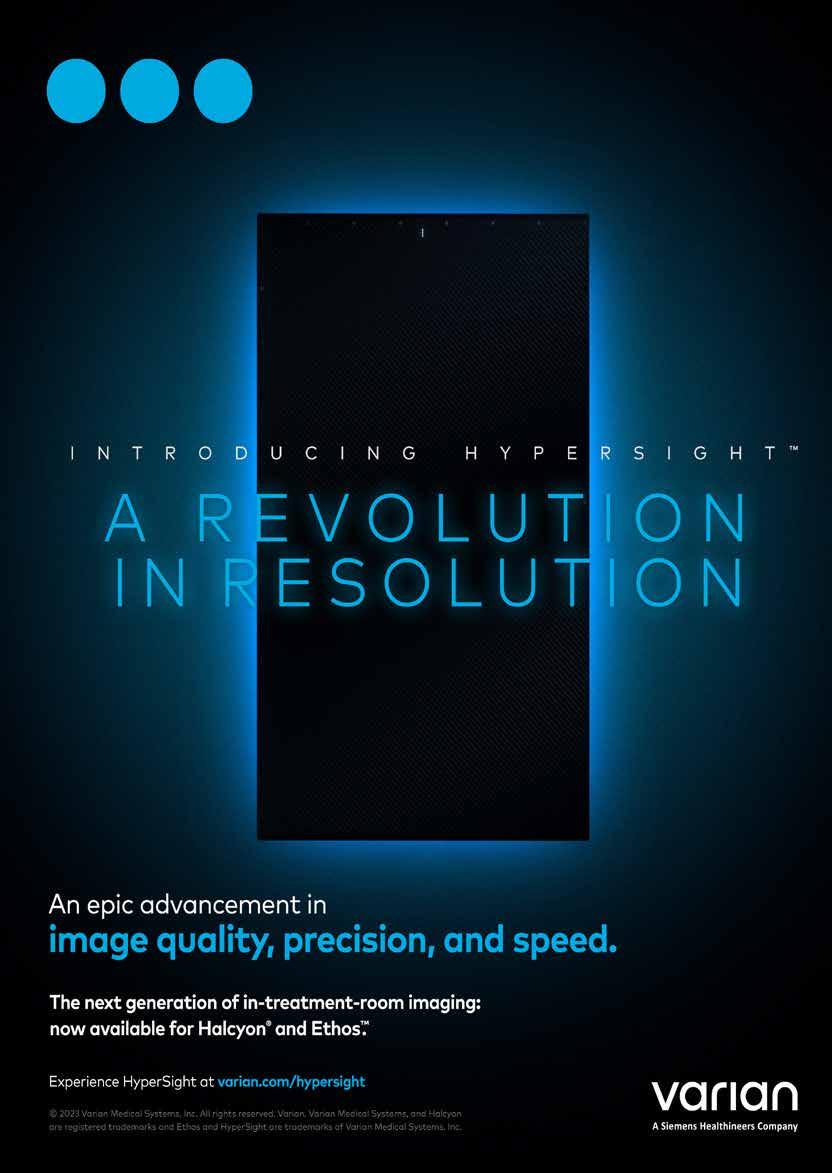
While the outcomes of the Medicare Benefits Schedule (MBS) review for Radiation Oncology were not announced in the recent Federal Budget, the College looks forward to the details being released once finalised.
When announced, there will be wholesale changes to the way that Medicare funds Radiation Oncology. All current Medicare items will become obsolete, and all services will be billed under new Medicare item numbers.
The new item numbers and descriptors more closely reflect Radiation Oncology services provided to patients and are more straightforward, making billing to Medicare easier.
For over eight years, the College and wider Radiation Oncology sector have worked hard to ensure that radiation therapy items in the MBS review reflect contemporary practice and are reimbursed accordingly.
This lengthy process, characterised by effective collaboration, extensive advice, and strong advocacy to the Department of Health, was led by the Implementation Liaison Group (ILG), which included:
• RANZCR representatives
o Associate Professor Dion Forstner

o Sandra Keogh
o Dr Keen Hun Tai
o and myself
• Australasian College of Physical Scientists and Engineers in Medicine (ACPSEM)
• Australian Society of Medical Imaging and Radiation Therapy (ASMIRT)
• Radiation Therapy Advisory Group (RTAG)
• Australian Private Hospitals Association (APHA)
• Cancer Voices NSW.
The College provided comprehensive feedback throughout the process and rigorous data that has been used to model the new Radiation Oncology schedule.
However, some of the key principles underpinning the review were not open to discussion, including the government’s stipulation that the transition to a new schedule be cost neutral.
Consequently, the overall expenditure for Radiation Oncology will also remain cost neutral, although Radiation Oncology fees are eligible for annual indexation which will go some way towards reflecting and recouping the costs of providing services.
The MBS review remains a priority, and the College will continue to advocate for the best possible outcomes for radiation oncology services so that the promise of this once-in-a-generation change is realised.
In the meantime, given the scale of the changes, it is critical that members are proactive and start planning for the new schedule.
Radiation Oncology centres will require substantial IT support to program the new Medicare Item numbers into their billing systems and staff will need to be trained to ensure continuity of patient care when the changes to the new schedule come into effect.
The College strongly encourages all members to:
• communicate with their department / hospital / workplace and IT about the outcomes of the MBS review as soon as possible
• discuss how and when the changes will be addressed
• discuss potential impediments and issues, and mitigating strategies.
While the onus is on the Department of Health to implement the new schedule, it is incumbent upon each of us to make this process as seamless as possible and help to ensure that the objectives of fair, accessible and sustainable radiation therapy services are realised.
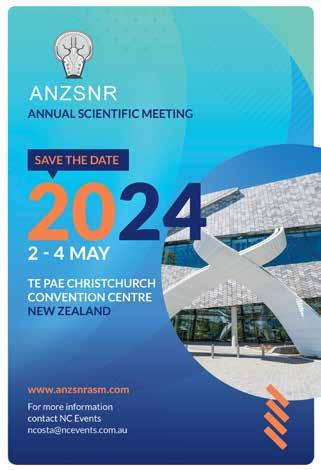
The College will continue to provide practical guidance, advice, and support to members throughout the transition, and post implementation, will monitor the new schedule closely to ensure that there are no unintended consequences. As with anything new it may take some time to familiarise ourselves and our centres with the new schedule, but it will ultimately lead to a better billing system that ensures patient care.
Given the scale of the changes, it is critical that members are proactive and start planning for the new schedule.Lisa Sullivan
As I write this article, it’s hard to believe we’re mid way through winter. Canberrans are out wearing their puffy jacket uniforms and I hope you’re all staying warm. I’m looking forward to our 2023 Annual Scientific Meeting which is being held in sunny Brisbane 19-21 October, the theme is “Beyond”. You can register now and still get that early bird registration.
I would like to congratulate all our trainees who recently sat the first series of examinations. Congratulations to those heading towards fellowship and those who will be applying to move to Phase 2. For those who were unsuccessful, please remember the exams are just one component of becoming a competent and successful radiation oncologist. Many of the radiation oncologists and physicians I admire and respect the most have overcome obstacles in their training, including having to re-sit their specialty exams.
I would like to commend our examiners, the College Staff, and trainees on the delivery of the Phase 2 Series 1 Viva Examinations. There were a small number of unacceptable technical and environmental issues that needed to be overcome and I congratulate all those involved in their ability to deal with these challenges in a very stressful situation. Through the hard work of the examination team, thankfully there was no impact on candidates results. With
CHIEF CENSOR IN RADIATION ONCOLOGY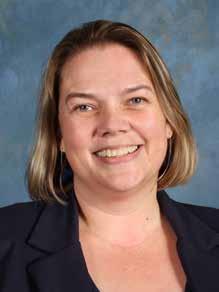
multiple candidates at multiple sites, external environmental factors cannot always be managed as readily, compared to when the examination is conducted at a single venue. To reduce these risks for candidates from Series 2, 2023, the viva examinations will return to a faceto-face setting, with all candidates and examiners at the same facility in Sydney. The current examination format will otherwise remain the same and we hope for a less “exciting” time for Series 2.
As you can imagine, with any implementation there is always tweaking and evaluating that is required. Often, we are unaware of the unintended consequences of what can seem to be simple, straightforward decisions. Thank you to those of you who have shared your feedback regarding our Radiation Oncology Training Program. It is only through sharing your experiences (both good and bad) that we can continue to improve our program. I encourage you to continue sharing your feedback as we truly value it, will listen to it, and will make changes wherever possible. Speaking of tweaks based on feedback, I am delighted to share with you that the ROETC has approved changes to the Multi-Source Feedback (MSF) process. We received feedback from many Directors of Training (DoTs) that for the MSF to function as it should it was vital that they could review the individual comments and not just the average
marks. DoTs also wanted the flexibility of asking for more than the previous cap of 6 responders when needed. Therefore, from 1 May 2023, the MSF form will not automatically close at 6 responders. DoTs will be required to manually close the MSF form, allowing them to review the individual, de-identified feedback, including comments that may be sensitive or personal in nature, prior to closure. DoTs can then ensure that the feedback they give to trainees is constructive, supportive, aligns with the program’s learning objectives and is helpful to trainee progress.
Preparations are underway for the College’s AMC assessment which is being held in late August 2023. The AMC will be meeting in person and virtually with many training sites across Australia and New Zealand. They will also be meeting with a range of the committees across both Faculties to get a good understanding of how our Training Programs work. Please take this opportunity to meet with the AMC at your site to provide your feedback about your training experience or the training program more broadly.
Like all specialities, Radiation Oncology requires constant updates and improvements. Ensuring our trainees are receiving excellent, safe, and supportive training at individual sites is a vital step in ensuring the highest standards of patient care for the future. We have scheduled 17 site visits for 2023, with nine visits already completed this year. We acknowledge that the pandemic has caused a backlog of visitations, but we are working hard to make up for the lost time.
Another positive development is the ongoing reform of the Radiation Oncology Accreditation Standards. These standards play a crucial role in ensuring that our training sites meet the highest standards of quality and safety for our trainees and their
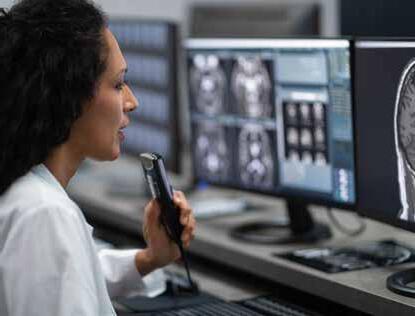
patients. Feedback from targeted stakeholder consultation is currently being incorporated into the standards. We are on track to trial these standards this year, with a view to implement them in 2024.
I’d like to end this report with a reminder from my previous report. The College is OUR college and is made up of all of us — staff, volunteers, trainees, and members. As chief censor, it has been inspiring to see behind the “the college” at how many people volunteer hours and hours of their own time, sweat and tears trying to improve the care of our patients, the teaching and assessment of our trainees, and the standards of our profession as a whole. Of course, we are not always going to get it right and we need to keep working, in particular, on
our processes and communication. All of you can help by positively engaging with the college that, in the end, exists for us all. Please, if you are unhappy with decisions or the directions being taken, please feed-back with kindness and consider offering some of your time so that we can truly represent all members.
I am very happy to be contacted at any time by anyone who wishes to connect, ask questions, give feedback, volunteer, or needs support.


Lisa.sullivan@act.gov.au

frequently used when talking about equity vs equality is that equality is akin to leaving a door open for anyone who has the means to approach it whereas equity is ensuring that there is a pathway to that door for those who need it. Understanding this nuance is essential in the pursuit of equity.
positions is currently held by a woman. A diversity, equity and inclusion taskforce has been approved by the board earlier in the year to help investigate the diversity and equity within our college.
Dr Tracy Lim
I have found the AMA Doctors in Training (DiT) Trainee Forums this year quite thought-provoking, and they have stimulated some interesting conversations with chairs of various colleges. In particular, the most recent forum made me think more deeply about an important and particularly relevant topic in recent times: gender equity.
There is more of course to equity than simply gender. We are after all a diverse community and our various backgrounds, experiences, interests, and passions contribute to and help create the unique world we live in. For today however, I shall focus on gender equity, especially in the setting of advanced training, which was the topic of the recent trainee forum. I must admit that this is not something I had at the forefront of my mind prior to this conversation, and this made me reflect. It made me re-evaluate my understanding of equity and how this can be achieved. One analogy that is
RANZCR recently established a working group under the Economics and Workforce Committee to review the status of gender diversity within radiation oncology, and it concluded that gender disparities persist. The RANZCR membership data from 2012 to 2021 showed an increase in number of female radiation oncologists (from 39 to 44%) and the 2018 census revealed that there was almost an equal number of male and female trainees within the trainee cohort. However, despite the encouraging numbers, the working
The AMA DiT Trainee Forum recently welcomed the Advancing Women in Healthcare Leadership team, and we were asked to reflect on what we see as the main issues or barriers of training when thinking about gender equity within our respective colleges and what change/s we would like implemented to address those. The common themes that emerged during this discussion across most colleges were flexibility in training, financial support, rural rotation requirements, return to work policies and improved mentorship. Our interrupted and part-time training policy is being revisited and will hopefully continue to evolve to help support trainees juggle advanced training and life commitments. Our O&G colleagues seem to have made great progress in recent years with improving policies that support gender equity and this was inspiring. We have much to learn and improve on, but it was positive to note that all colleges are actively thinking about this important issue.
Improving gender equity during training is not easily achieved and as with all change, it will take time. The importance of gender equity is being recognised which is the first step towards improvement. We have made significant progress and I am confident this will continue in coming years.
group found that female ROs are less likely to engage in full-time active clinical work, hold a post-graduate degree and obtain a consultant or fellowship position following graduation than their male counterparts. Male fellows are also more likely to be involved in leadership positions. Only one of the eight RANZCR Board director
Dr Tracy Lim Chair, ROTC 2023Female ROs are less likely to engage in full-time active clinical work, hold a post-graduate degree, and obtain a consultant or fellowship position following graduation than their male counterparts
Adaptive radiotherapy has great potential to provide cancer patients with more precise and personalized treatment than was possible before. With artificial intelligence driving the treatment and planning processes, adaptive radiotherapy enables clinicians to adapt a patient’s treatment plan each day based on tumour and anatomical changes, so that dose distributions are more conformal than can be achieved with non-adaptive approaches to radiotherapy.
As with the early days of IMRT, the question remains: does adaptive radiotherapy make a difference to clinical outcomes for patients? Will it allow margin reductions? Will it reduce toxicities? To find out, Varian is investing in two kinds of clinical research— Varian-sponsored clinical trials and investigator-initiated studies.

In 2022, Varian announced the ARTIA clinical research program, which is a portfolio of Varian-sponsored clinical trials on adaptive radiotherapy. The acronym stands for: Adaptive Radiation Therapy using an Individualized Approach. “As we designed the ARTIA clinical research program,” said Ricky Sharma, MD, PhD, Vice President, Medical Affairs at Varian, “it was important to focus on tumour sites for which we could measure meaningful clinical endpoints to compare against pre-existing studies within a reasonable timeframe.”
Each trial was developed in collaboration with lead investigators (oncologists and medical physicists) who provided clinical insights for the trial design as well as technical expertise for implementing the optimal approach for daily adaptation. Protocols were
reviewed by members of the Adaptive Intelligence™ Consortium (AIC), a global community of clinicians and scientists from leading cancer clinics working to develop best practices for adaptive radiotherapy based on clinical evidence. This ensured that the studies are broadly applicable and will yield clinically usable information across diverse oncology treatment settings.
As a result of those conversations, seven clinical trials were developed, two on treating cancers of the bladder and one each addressing cancers of the cervix, lung, prostate, pancreas, and head & neck. As of March 2023, five of the seven clinical trials were open and enrolling study participants.
In parallel with the ARTIA program, Varian is providing support through its research grants program to institutions around the globe that are conducting their own adaptive radiotherapy trials. These investigator-initiated studies (IIS) cover a wide range of novel approaches for utilizing the Ethos platform. There are currently 21 investigator-initiated studies of Ethos opened or planned at 13 institutions, covering numerous disease sites including head & neck, brain, breast, lung, rectum, bladder, prostate, vulva, cervix, anus, melanoma, bone metastases and oligometastatic disease.
“Many of the investigator-initiated studies evolved from the innovative concepts generated amongst AIC members during the initial planning phase of the ARTIA studies,” said Heather Curry, MD, Senior Director of Global Evidence and Value, and member of the Medical Affairs team at Varian. “These are generally smaller, single institution studies with
planned enrolment ranging from 1-100 participants and investigate highly individualistic techniques that may not necessarily lend themselves to the consensus required for study under a consortium approach. The investigatorinitiated trials focus on the feasibility, safety, and early clinical experience of Ethos first adopters as they implement these novel techniques and workflows.”
For example, one trial carried out at Amsterdam University Medical Center sought to evaluate the feasibility of implementing a rapid workflow by omitting the treatment planning CT for patients with metastatic bone disease. The treatment plans were instead generated using the prior diagnostic CT-scans and were then adapted oncouch to the patients’ positioning and anatomical changes by using Ethos adaptive radiotherapy (ART). This workflow enabled patients to be treated with highly conformal IMRT plans within two hours after consultation on the day of their first visit.
To view the complete article including a full list of references, please refer to Investing in Clinical Research to Improve Patient Outcomes: Ethos™ Adaptive Therapy Clinical Research | Varian
A version of this article previously appears in Centerline April 2023
Further information can be obtained at www.varian.com
Please direct all enquiries to Varian Medical Systems Australiasia on 1800 657 036 or customerservice-anz@varian.com
Late last year, the accreditation team requested your feedback on the draft Accreditation Standards for Training Sites.
We were delighted by the number of members who responded with specific comments to help us improve the draft standards, criteria and suggested evidence.
The Accreditation Review Working Group discussed the feedback received in detail and have amended the wording to address many of the concerns raised. In summary, changes were made to:
• Improve the clarity regarding protected time for Directors of Training
• Reduce the reference to acronyms for less common names
• Reduce ambiguity and use of vague terms, such as ‘adequate’
• Refer to cultural safety and diversity in separate criteria
• Remove the need for meeting minutes as evidence for quality assurance and continuous improvement when these are not always produced
• Remove the need to provide policies and procedures which cover the workplace, and include a list
• Add the criteria of flexibility being afforded to trainees (without disadvantaging other trainees or compromising clinical care)
• Fit-for-purpose clinical equipment, with at least one linear accelerator less than 10 years old, and a plan to replace older machines
• Add detail about the staffing to trainee ratio (i.e. one clinical supervisor employed per trainee)
• Clarify the requirement for follow up/ treatment review clinics
• Clarify the requirement with regard to trainee protected time and activities that may be undertaken during that time
• Refer to the Curriculum Learning Outcomes and Training Program Handbook, where relevant. The revised document will now be considered by the Radiation Oncology Education and Training Committee (ETC). We are currently devising guidelines for the process associated with the accreditation inspections of training sites and we anticipate that we will be distributing this for consultation in the coming months. We will then be trialling the accreditation standards and the associated process with some training sites in the second half of this year, with a view to launching the updated standards and process in 2024.
The College recognises that in the first 12 to 24 months of implementation of the revised RANZCR Radiation Oncology Accreditation Standards, assessment of sites against the standards will need to be implemented with a degree of flexibility in order to ensure sites are not adversely impacted by the change.
The College intends to closely monitor the validity of the requirements and the effectiveness of the accreditation process in determining a site’s ability to deliver the RANZCR Radiation Oncology Training Program.
We are currently devising guidelines for the process associated with the accreditation inspections of training sites and we anticipate that we will be distributing this for consultation in the coming months.
As radiation oncologists, our primary goal is to treat our patients with high quality radiation therapy, delivered safely and accurately. We spend a large portion of time poring over our volumes and working closely with our Radiation Therapist colleagues in refining each plan and making millimetre shifts during treatment delivery. What we often take for granted is the accuracy of our planning and treatment systems.
Robust quality assurance of both hardware and software is vital in ensuring we deliver what we think we are. This is the role of our Radiation Oncology Medical Physics colleagues, amongst other roles, arguably, one of the most important jobs in any Radiation Therapy department. So how accurate should we be? Are our linacs delivering what we think they are? Furthermore, how do we compare different departments? This is where the Australian Clinical Dosimetry Service (ACDS) comes in. The ACDS is an independent dosimetry auditing program governed by the Australian Radiation Protection and Nuclear Safety Agency (ARPANSA) and covers 99% of radiotherapy centres across Australia and 50% across New Zealand.
The breadth of the auditing program offered by the ACDS encompasses simple linac output measurements that can be performed remotely (the most simple audit- Level I), through to complex IMRT and VMAT end-to-end tests (level III). More recently, the suite of audits now offered includes SABR (Lung, spine and soft tissue) and cranial SRS with a customised phantom with MR-visible material, compatible with Conventional Linacs, as well as most of the commonly used systems (eg; HyperArc and Gammaknife™) .
Whilst the vast majority of results return as Optimal, there can be unexpected Out of Tolerance results that require
both troubleshooting and clinical input. This is the role of the Clinical Advisory Group (the CAG), assembled by the ACDS for both technical support and advice. It includes representatives from; Australian Society of Medical Imaging and Radiation Therapy (ASMIRT), New Zealand Institute of Medical Radiation Technology (NZIMRT), Trans Tasman Radiation Oncology Group (TROG), Australian College of Physical Scientists and Engineers in Medicine (ACPSEM) and RANZCR as well as an independent technical expert nominated by APRANSA.
Playing witness to the discussion that occurs amongst our talented Radiation Oncology Medical Physics colleagues within each CAG meeting fosters much admiration and reasurrance. Knowing we have these very clever people ensuring our linacs are extremely accurate should provide us all with piece of mind. Being a member of the CAG and being able to contribute to these discussions by providing the clinical perspective is a privilege. Encouraging every department that delivers therapeutic radiation therapy (from large tertiary referral centres with multiple Megavoltage lincas to single unit kilovoltage centres who solely treat with superficial) across Australia and New Zealand to subscribe to the ACDS is in the best interests of our patients. The ACDS continues to develop and refine their audit program to remain current and reflect the spectrum of techniques utilised by radiation therapy providers across Australia and New Zealand. Next on the horizon are audits that incorporate motion management, online adaption and MR-only planning.
The CAG meets quarterly to discuss recent audit results but to also provide support on audit development. Whilst each meeting consists of some fairly physics-heavy discussions, mostly interpretation of gamma pass rates and distance-to-agreement (DTA) measurements that are out of tolerance, it is the insight into whether these results are clinically significant is what is gleaned from the CAG. Deciding how to advise a department who is out of tolerance on whether they should continue treating with that technique until further clarification or action is taken is challenging. Remembering to keep the patient at the centre of each decision helps us navigate through the many pages of gammas and DTAs.
Dr Louise Nardone, Quality Improvement CommitteeRobust quality assurance of both hardware and software is vital in ensuring we deliver what we think we are.
evidence as you go — it will make your life so much less stressful if you are selected for random audit! My other recommendation is to upload your CPD activities regularly throughout the year — set aside time on a regular basis, as it is easier than trying to remember many months later. You may have even completed your requirements for 2023 by now if you do!
Greetings. In June, the FRO Professional Practice Committee (PPC) held its third meeting for the year with a full work program. Here are some goals that we are prioritising.
Whilst the vast majority completed their 2022 CPD requirements, the remaining few were referred to the Board and are no longer fellows. Lack of compliance with our CPD program requires us to notify the Medical Board of Australia (MBA) or Medical Council of New Zealand (MCNZ).
We have commenced the random audit for the 2022 CPD year. The College is required to undertake a random audit of seven per cent of the membership on an annual basis. This involves checking evidence uploaded to substantiate CPD activities recorded. Those who upload their evidence as they go will have no issue. As most of us do far more CPD type activities than we need to do, a tip is to be selective and focus on recording those activities with their
As you know, all members are required to complete a Professional Development Plan (PDP) as part of the CPD program on an annual basis. As we are now well into the 2023 annual CPD cycle this is a reminder to complete your PDP as soon as possible! This is a requirement set by the MBA and MCNZ and assists in guiding your CPD and educational activities for the year. A template can be found in the CPD ePortfolio, however, if you have an alternate template, you are welcome to use this also. The College recognises that many employers require staff to submit PDPs as part of their annual reviews. If you have a PDP with your employer, this can be indicated in the CPD ePortfolio, and a copy can be saved in the ePortfolio. There is NO requirement to repeat this exercise. If you have any questions about the PDP requirement or general CPD enquiries, please contact the team via CPD@ranzcr.edu.au
The PPC proposed reviewing the College Code of Ethics in partnership with the Faculty of Clinical Radiology PPC. The RANZCR Code of Ethics was first published in 2015, with minor updates made since. To ensure recency and relevance of the information, the PPCs were tasked to undertake a full review in 2023. After a thorough initial
review, the PPC is drafting a modernised code to include references to ethical principles in Artificial Intelligence in medicine, prioritising consent and communication with patients, consideration for adding more detail on cultural safety and congeniality amongst colleagues. Ethics is a crucial part of our business; I anticipate finalising improvements to the Code will be a key achievement for the year.
The FRO Mentoring Program Working Group have been meeting regularly to prepare the next steps of launching a new pilot program by quarter four of this year. It was decided that the program will be designed by the College, maintaining some of the features of the original program from 2020 but overall, the program will be refreshed with a focus on mentors addressing specific goals identified by the mentees such as but not limited to: career establishment and progression, career tailoring to specific interests, support for working in specific departments, work/life balance and pursuing a family during training. The PPC is happy with the progress of the new program and we look forward to seeing it come to fruition. Further information will be provided to the membership as details are finalised.
If you have any questions or comments regarding the work of the FRO Professional Practice Committee, please feel free to reach out by emailing the College team at: professionalpractice@ ranzcr.edu.au
Best regards Carol
Dr Carol Johnson Chief of Professional Practice Faculty of Radiation Oncology


Presented by Associate Professor Marc Agzarian
With MRI progressing rapidly, a sound understanding of the physics, technology and equipment is required to fully exploit MRI’s potential. MRI safety, image quality, artefacts and optimisation strategies are covered throughout the course.
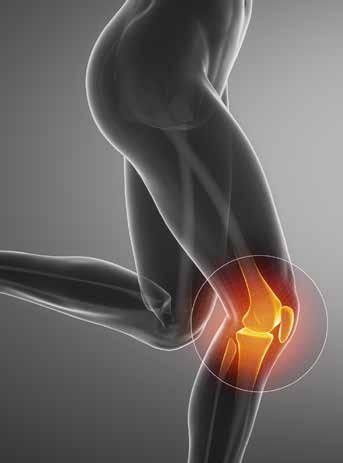
With all original, vendor neutral content, this course will benefit radiologists, radiology registrars, radiographers, radiation therapists, neurologists, cardiologists, neurosurgeons, researchers and medical physicists wanting to gain a better understanding of MRI.
We go beyond simply meeting training requirements:
l Maximum allowable course based live and library cases for ANZ credentialing.

l 40.75 RANZCR CPD hours for Masters.
23.75 RANZCR CPD hours for Recertification.
l Officially sponsored and endorsed by GE Healthcare for more than 10 years.
l Live scanning at second highest global recruiting site in SCOT-HEART study.
3

different so, hopefully, still of interest to New Zealand members. Early bird registrations are open.
For those of you looking to complete the cultural safety component of your CPD, the combined session on Saturday afternoon includes presentations from Professor David Tipene-Leach and Dr Elana Curtis. They will be speaking about equity in healthcare and will be joined by Rouse Fellow Dr Mei Ling Yap for the Q&A panel at the end of the session. Dr Dana Tipene-Hook will be chairing the session.
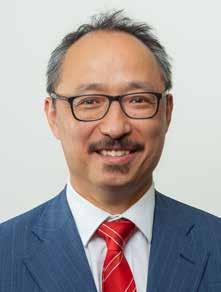
The GP referral pathways that ACC introduced in 2020 have proven that, when well supported and monitored, GP referrals for MRI do not increase volumes of referral beyond capacity and do shorten the time to treatment for the patient.
The College will continue to support this work — we will keep you updated.
Kia Ora Koutou. As I write, the year of the floods continues in Auckland. I hope you are keeping dry.
I know many of you will be as excited as I about the Women’s FIFA World Cup coming to NZ and Australia. This opportunity to watch world-class athletes should not be missed.
On the other hand, please do forgo the World Cup games the weekend of 11 August. The NZ ASM is being held in Queenstown that weekend. I’m looking forward to seeing all our NZ members once again in such a wonderful location. The College Board will be meeting in Queenstown and attending the NZ ASM – it will be good to have them too.
The programme showcases a good range of local and international speakers. I understand some of you may have seen Prof Giuseppe Brancatelli in Adelaide but I’ve been told the talks in Queenstown will be
In May, the Musculoskeletal Group met with ACC and the New Zealand Orthopaedic Association (NZOA). The meeting went well with general agreement that imaging resources should be used for the benefit of patients and steps should be taken to avoid unnecessary imaging.
The NZOA continues to have concerns about physios requesting ultrasounds of the knee, which provides limited diagnostic and treatment benefit. The group noted that co-payments for x-ray often present a challenge for some patients and ACC does not currently allow physios to refer for MRI. Waiting times to see a surgeon are 4-6 months in some regions. This is unfortunate for the patient, especially in situations where surgery won’t be necessary. There was extended discussion about opening up referral pathways to GPs and physiotherapists. Doing so will better manage resources as the correct imaging modality will be used from the start and patients will no longer need to wait to see a surgeon prior to getting an MRI. Additionally, the surgeons will only see patients who are likely surgical candidates. Other patients will be able to remain within the care of their GPs and physiotherapists for treatment.
At their May meeting, the New Zealand Radiation Oncology Executive received an excellent presentation from Te Aho o Te Kahu about the Community Hui they ran in locations throughout Aotearoa in 2021. I understand that Te Aho is presenting throughout NZ and may make some of the content available via webinar should any NZ members be interested in feedback from Māori patients and whanau about their cancer journeys.
The NZROE remains concerned about workforce issues for radiation oncology and spent some time discussing advocacy, particularly in light of significant consultant shortages in Dunedin and Palmerston North.
The NZ Branch Committee enjoyed some spirited discussion about referrer ownership of imaging practices as well as recent Medical Council of New Zealand consultations. The revised MCNZ Statement on Telehealth has reminded us that the discussions with the Ministry of Health regarding registration of overseas-based teleradiologists were paused during COVID and the transition to Te Whatu Ora. It is time to reengage on this issue – it is important that all doctors caring for New Zealand patients are registered.
... continued from page 44
This will ensure that they remain up-todate and aligned with RANZCR’s new Clinical Radiology Training Program and current AMC requirements.

The potential benefits and impacts of Artificial Intelligence (AI) on medical imaging continue to be the subject of extensive and ongoing discussions within the College.
Evaluating how AI can best be deployed in clinical practice is a priority, as is how best to equip trainees for modern radiology practice in which AI will continue to play a significant role.
On another note, the College is currently preparing for the upcoming AMC assessment in late August 2023. This will also include meetings with several Training Sites in Australia and New Zealand.
The College encourages you all to offer your perspectives on the training experience when they visit.
Original Article: MRI Ankle- Magnetic resonance imaging of the ankle: Pathology of the lateral and posterior compartments
Corresponding author: Paul Edmund Smith, Matthew Morey, Luke Joseph McManus, Andrew Kong
Summary: Magnetic resonance imaging (MRI) is the gold standard for imaging the tendons and the ligaments of the ankle MRI combines excellent tissue contrast and accurate anatomic delineation of joint structures In the first article of this series, we discussed a compartmental approach to the interpretation of ankle pathology focusing on the anterior and medial compartments This article will complete the MR review of the ankle, with a focus on the lateral and posterior compartments of the ankle
M a g n e t i c r e s o n a n c e i m a g i n g ( M R I ) i s t h e g o l d s t a n d a r d f o r i m a g i n g t h e t e n d o n s a n d t h e l i g a m e n t s o f t h e a n k l e M R I c o m b i n e s e x c e l l e n t t i s s u e c o n t r a s t a n d a c c u r a t e a n a t o m i c d e l i n e a t i o n o f j o i n t s t r u c t u r e s . I n t h i s p i c t o r i a l e s s a y , t h e f i r s t o f t w o p a r t s , w e d e l i n e a t e t h e a n k l e i n t o a n a t o m i c compartments and use this as a template for describing pathology in each compartment
Review Article: Assessment of a single-pass venous phase CT chest, abdomen and pelvis and dual-energy CT in general oncology outpatients
Corresponding author: Huey Ming Seah, Hau Cher Choi, Nicholas Bajic, Lauren Oakden-Rayner, and Kirsten L Gormly,Adelaide ,South Australia
Introduction: This study assessed replacing traditional protocol CT-arterial chest and venous abdomen and pelvis, with a single-pass, singlebolus, venous phase CT chest, abdomen and pelvis (CAP) protocol in general oncology outpatients at a single centre
Methods: A traditional protocol is an arterial phase chest followed by venous phase abdomen and pelvis. A venous CA P (vCAP) protocol is a single acquisition 60 s after contrast injection, with optional arterial phase upper abdomen based on the primary tumour Consecutive eligible patients were assessed, using each patient's prior study as a comparator Attenuation for various structures, lesion conspicuity and dose were compared Subset analysis of dual-energy (DE) CT scans in the vCAP protocol performed for lesion conspicuity on 50keV virtual monoenergetic (VME) images
Results: One hundred and eleven patients were assessed with both protocols. Forty-six patients had their vCAP scans using DECT. The vCAP protocol had no significant difference in the attenuation of abdominal structures, with reduced attenuation of mediastinal structures. There was a significant improvement in the visibility of pleural lesions (p <0 001), a trend for improved mediastinal nodes assessment, and no significant difference for abdominal lesions. A significant increase in liver lesion conspicuity on 50keV VME reconstructions was noted for both readers (p <0.001). There were significant dose reductions with the vCAP protocol
Conclusion: A single-pass vCAP protocol offered an improved thoracic assessment with no loss of abdominal diagnostic confidence and significant dose reductions compared to traditional protocol Improved liver lesion conspicuity on 50keV VME images across a range of cancers is promising
If you are a member of the Royal Australian and New Zealand College of Radiologists, access JMIRO free online
Go to www ranzcr edu au
your

username and password
and digitised backfile content from volume 1, 1957!
As a member of the College, you can access a specially selected, member-only valuable rewards program. We want to deliver maximum value for your membership subscription fee. The program has been tailored to your needs—financial, insurance, legal, travel and lifestyle products and services are included.
See
They say “memories last forever” and some of the best memories for us all are holiday memories.
Our partner The Accommodation Brokers has been delivering holiday discounts to our members for more than three years and the ongoing feedback has been very positive.
“I am a RANZCR member and have used The Accommodation Brokers on six occasions, I just submit the best price I can find, and The Accommodation Brokers have always been able to secure a better deal,” says a College member from South Australia.
To discover your travel discounts, visit The Accommodation Brokers website, www.theaccommodationbrokers.com. au and register to become a member or email your request to bookings@ theaccommodationbrokers.com.au

• An initial meeting with a Partner or Director free of charge;
• A minimum 40 per cent discount on KPMG standard rates for the engagement period with all College members;
• Access to a dedicated national KPMG Enterprise team to support your members, across all service areas. This offer is available to the following services provided by KPMG Enterprise Australia, New Zealand and Asia: Audit and Assurance; Tax, Transactions, and Accounting; Advisory; Accelerating Business Growth.
To access the offer, please complete the online form. You will then be connected with the appropriate KPMG Enterprise contact.
bit.ly/ContactKPMG
3 years/60,000kms, and is based on BMW Condition Based Servicing or Service Interval Indicator, as appropriate. Normal wear and tear items and other exclusions apply. Servicing must be conducted by an authorised BMW dealer. Consult your preferred BMW dealer for further terms and conditions.
To find out more:
Online: Visit www.bmw.com.au/corporate or www.mini.com.au/corporate Phone: Call 1800 635 750
Email: Write to corporate@bmw.com.au
When you’re ready to make a purchase, you will require an authorisation letter from the College to access the corporate benefits. Email the College to request this letter.
BMW
BMW Corporate offers Australian College members and their spouses the following benefits:


KPMG Enterprise is a specialist division of KPMG Australia, dedicated to advising the emerging, private and midmarket. KPMG works with established and emerging entrepreneurs, family business, private clients, not-for-profit and fast-growing companies to build successful organisations.
College members can access the following benefits:
• A free Service inclusive for three years or 60,000kms*
• Benefits extended to your spouse or de-facto partner
• Reduced dealer delivery of $1,850 excluding taxes
• Access to a dedicated Corporate Sales Manager This offer currently excludes electric cars.
*Complimentary basic scheduled servicing, including Vehicle Check, is valid from date of first registration for whichever comes first of
Petals Network is one of Australia and New Zealand’s premier flower delivery services, proudly connecting customers with the world’s best local florists for almost 30 years.
All of Petals’ flower arrangements are artistically arranged and hand-delivered using only the freshest flowers available through its network of talented local florists.
College members receive 20 per cent off the value of flowers purchased. This discount applies to the flower value only. An additional delivery fee will apply.
Please register your details (bit.ly/PetalsRegister) to access the online catalogue and discount.
presented at national and international oncology meetings.
Brigid’s volunteering journey with the College began nearly two decades ago in 2003, and she had been a committee member, Chair, Faculty of Radiation Oncology Councillor or Board Director continuously since. Some of Brigid’s most notable achievements during this time include:
• developing the first Tripartite Plan as Chair of the Tripartite Committee (now the Radiation Oncology Alliance), which is the formal radiation oncology alliance of RANZCR, ASMIRT and ACPSEM
• fostering her passion for postFellowship education to lead the FRO’s Post Fellowship Education Committee and Annual Scientific Meeting Management Committee
Although she has been described as a “quiet achiever” by her peers, Brigid’s contributions have not gone unnoticed.
Brigid gave freely of her time to the College and was honoured by her peers with the prestigious 2022 Roentgen Medal for her very valuable contribution to the affairs of the College over a significant period. This is what past President Dr Lance Lawler had to say at the time: “Brigid is one of those rare ‘think before you speak’ individuals who always deeply considers the issues before weighing in, and as a result frequently ends up making the most significant contribution to any decision. Never one to blow her own trumpet, Brigid often described herself as ‘an imposter’; in reality, all she was doing was defining her innate humility and humanity, and underlining her suitability to serve.”
It is with profound sadness RANZCR wishes to inform members of the passing of former board member and treasurer A/Prof Brigid Hickey, on 13 May 2023.
Brigid attended the University of Queensland, graduated in 1986 and completed postgraduate training in Brisbane. She became a RANZCR Fellow in 1997 and this was followed by the Windeyer Fellowship at Mt Vernon in the United Kingdom. She has also worked in Christchurch, New Zealand as a Radiation Oncologist.
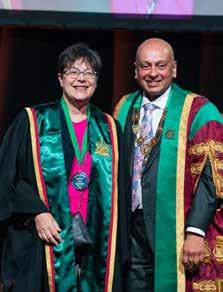
Brigid was a Senior Radiation Oncologist and Acting Director, Radiation Oncology at Princess Alexandra Hospital. Her areas of special clinical interest were Head and Neck cancer and Gynaecological malignancies.
She had been involved with the Cochrane Collaboration for more than 20 years, initially as a reviewer and was the Editor for the Colorectal Cancer and Breast Cancer Groups. She had published Cochrane reviews on breast, prostate and colorectal cancer and been the principal author in over 25 publications. Brigid also regularly
• playing an important role in reorganising the JP Trainor Trust Archives Committee to ensure this important link to the College’s past is in very good standing
• helping to steer the College through the unprecedented disruption of the COVID-19 pandemic as Board member, Treasurer and Chair of the Audit and Risk Committee.
During this difficult period for Brigid’s family, we offer our deepest condolences. Our thoughts are with you. We take solace in the fact that Brigid helped so many of her patients, members and others, and we will dearly miss her.
Dr Ruwanpura De Silva, Fellow, NSW
Dr Barry Gangguly, Fellow, SA
A/Prof Brigid Hickey, Fellow, QLD
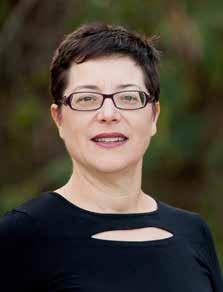
Dr Raynor Williams, Fellow, WA
A/Prof Kevin Bell, Life, VIC
2023 Nisbet Orator
Li Cunxin AO

Clinical Radiology speakers include:
Professor Mini Pathria
University of California, San Diego, CA, United States
Professor Stuart Taylor
University College, London, United Kingdom
Professor Cornelia Schaefer-Prokop
Meander Medical Centre, Amersfoot, The Netherlands
Professor Christopher G. Filippi
Tufts University School of Medicine, MA, United States
Professor Suresh Mukherji
University of Illinois, IL, United States
Radiation Oncology speakers include:
Professor Sean Collins
MedStar Georgetown University Hospital, DC, United States
Professor Karyn Goodman
Icahn School of Medicine, Mount Sinai, NY, United States

ASTRO Representative Dr Jeff Michalski
Carlos A. Perez Distinguished Professor and Vice Chair of Radiation Oncology at Washington University, St. Louis, MO, United States
ESTRO Representative Professor Matthias Guckenberger
University Hospital Zurich, Switzerland
EARLY BIRD REGISTRATION CLOSING MONDAY 3 JULY